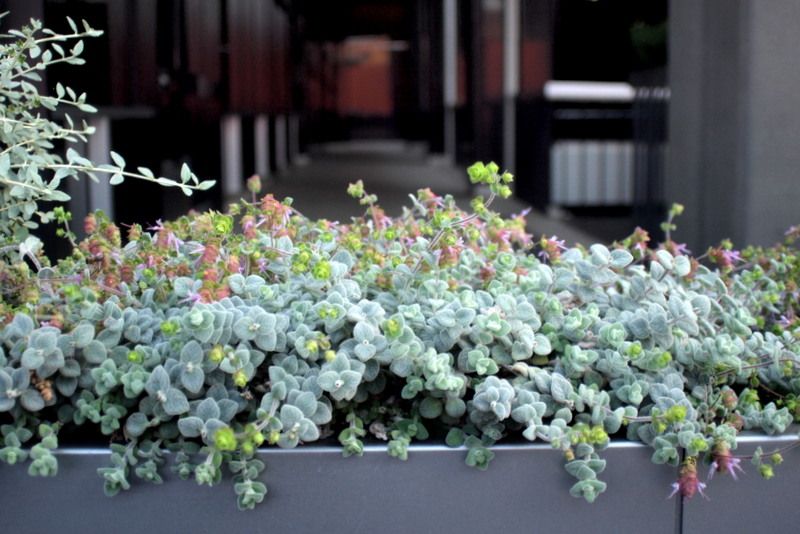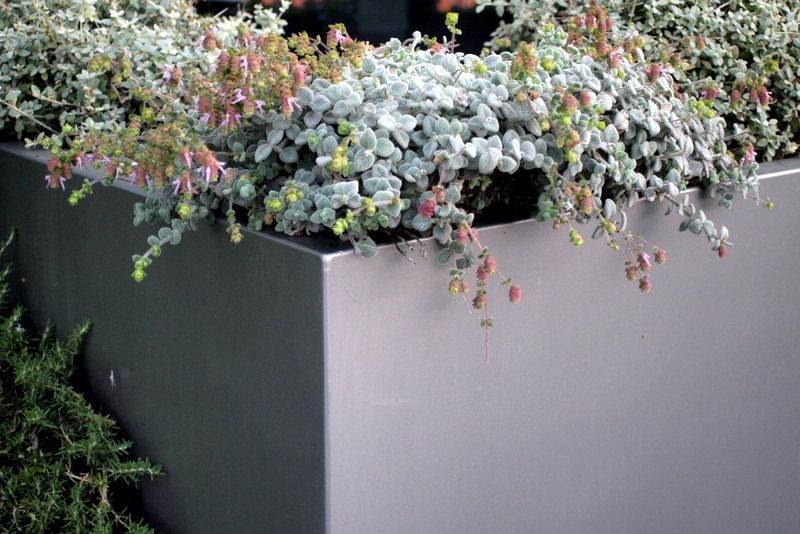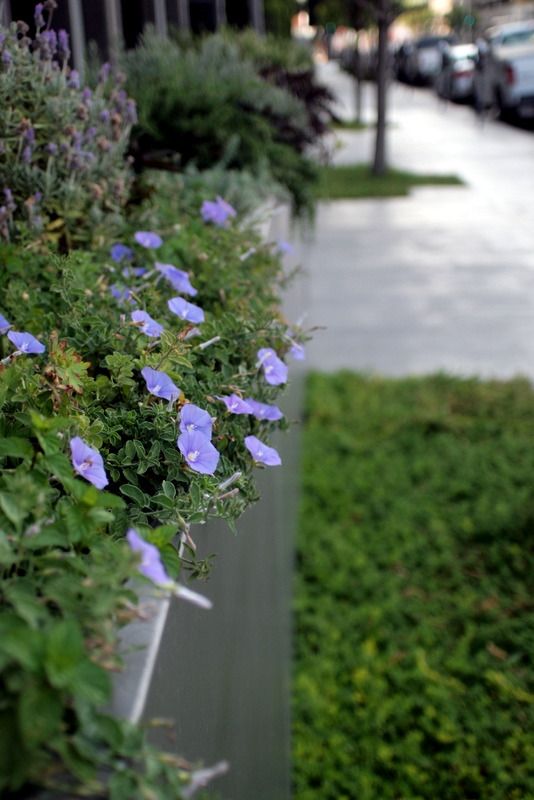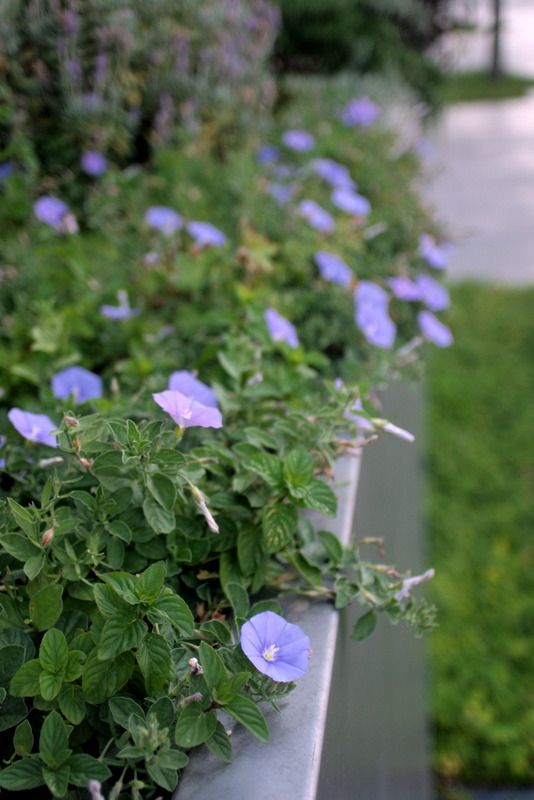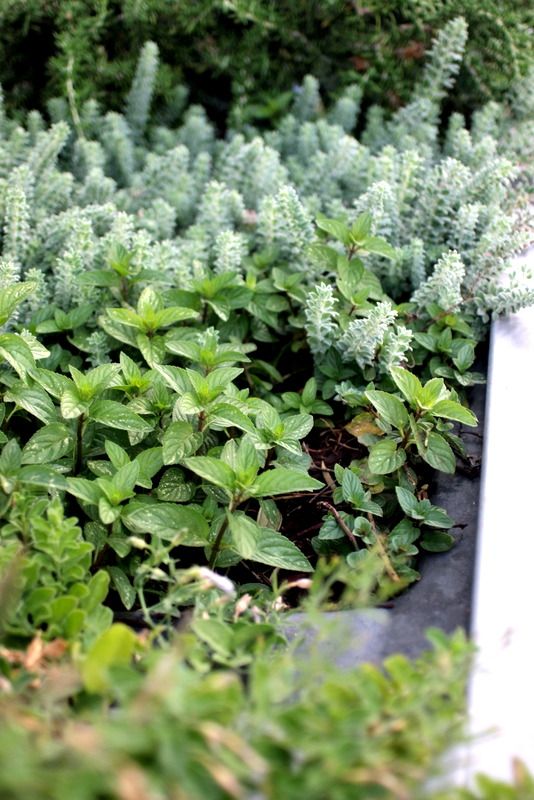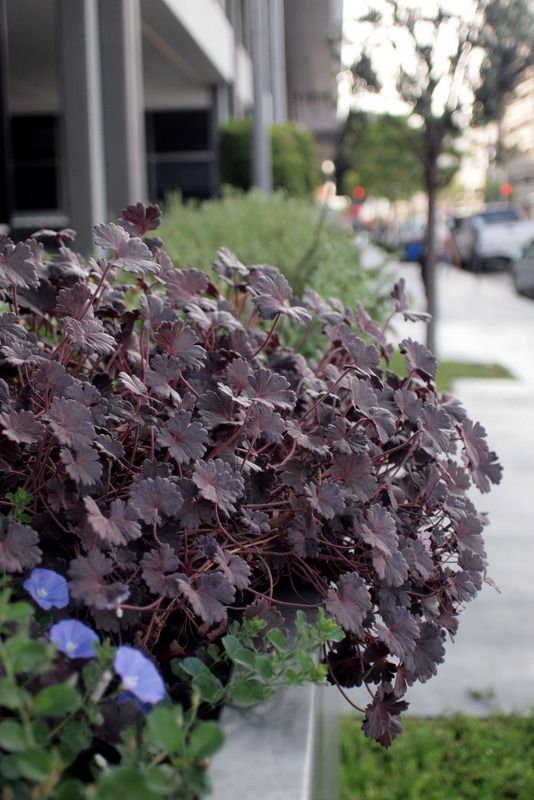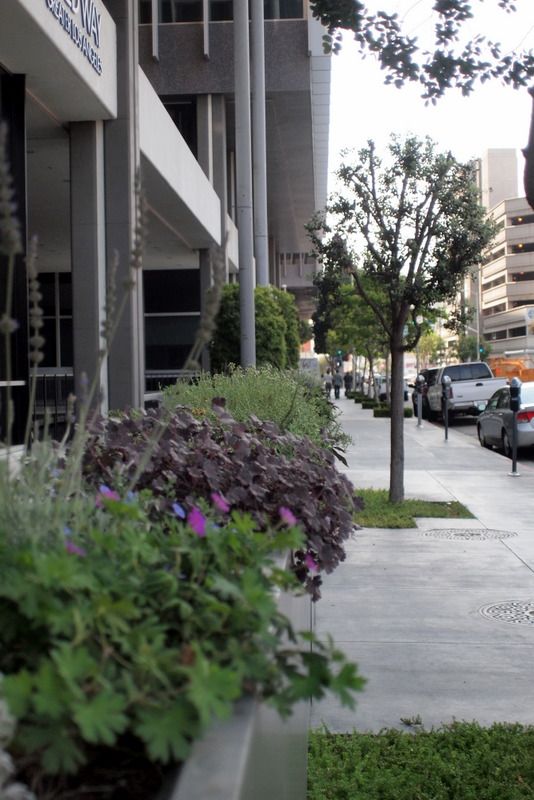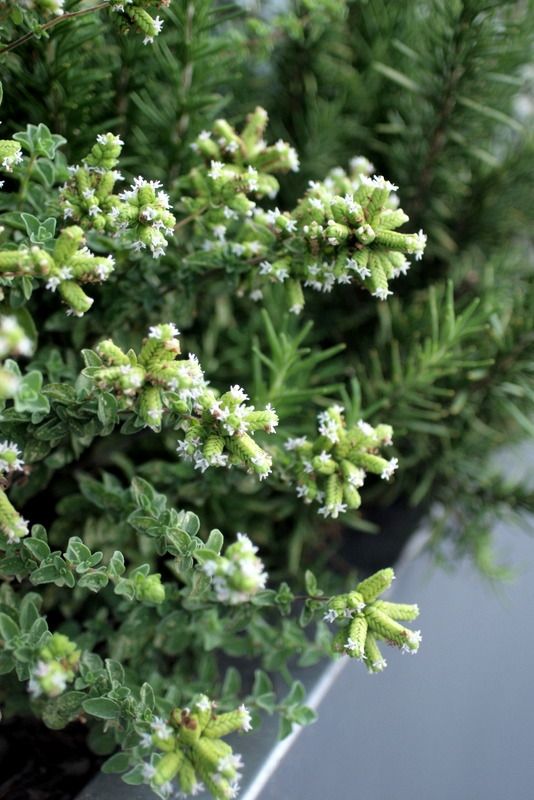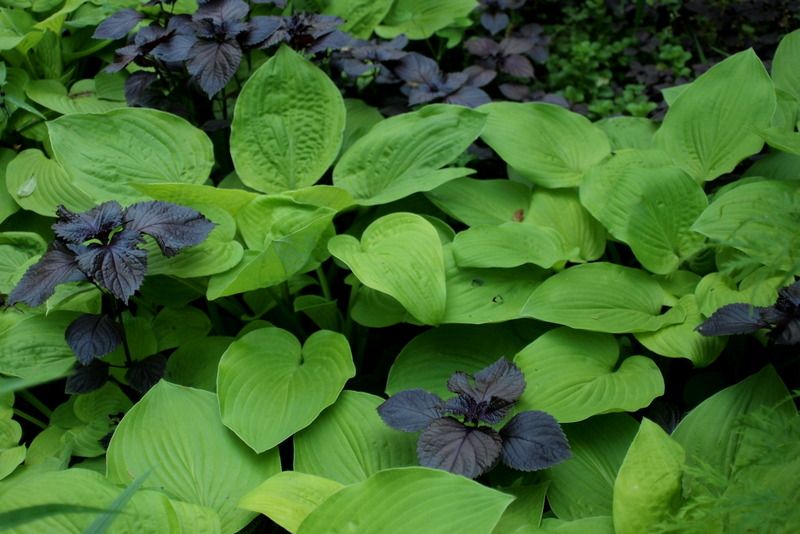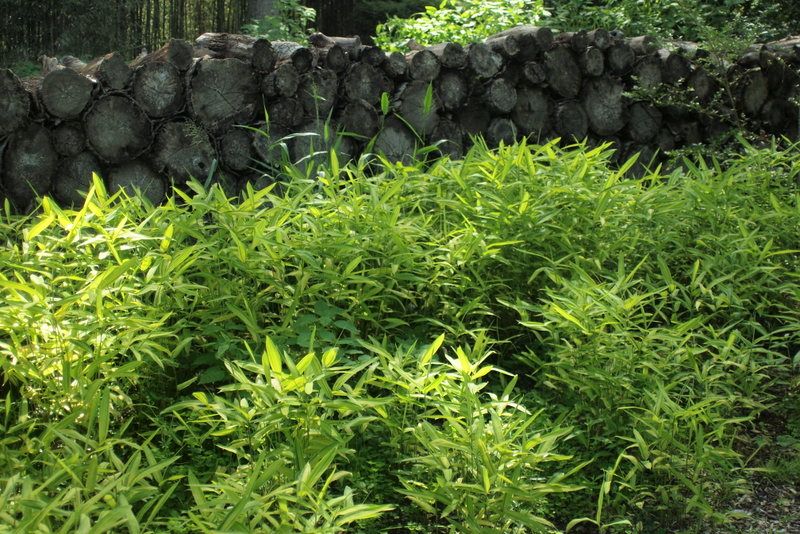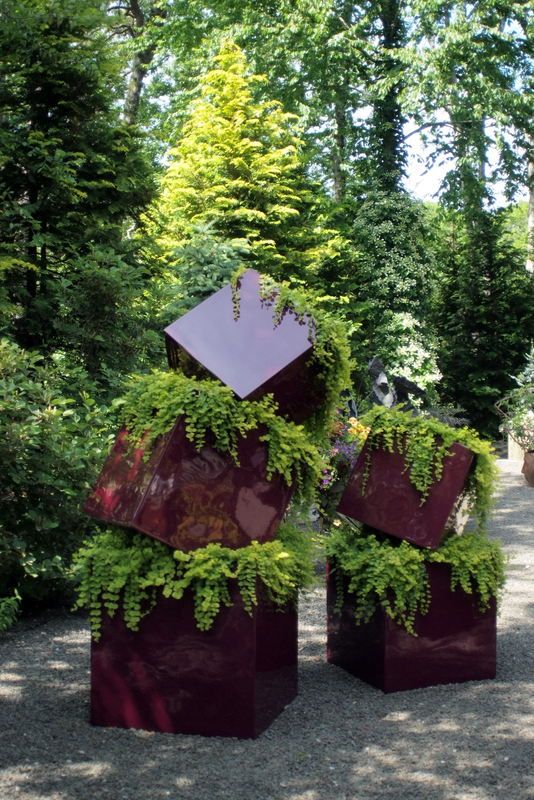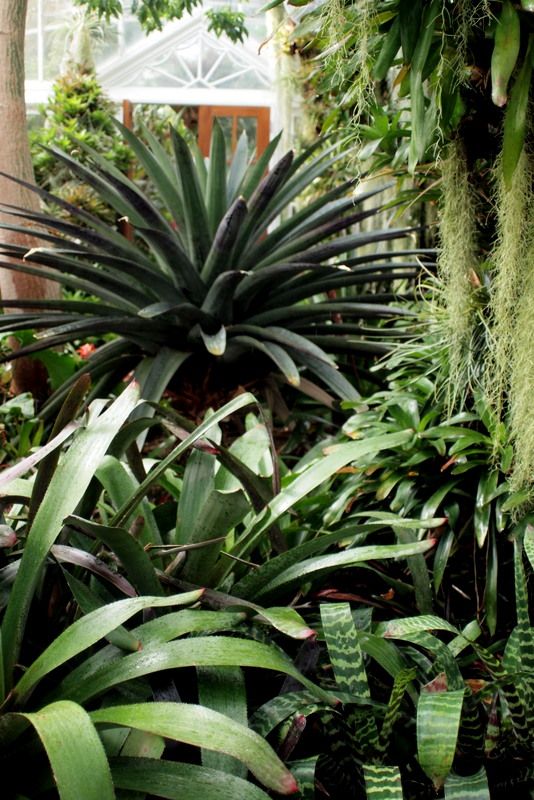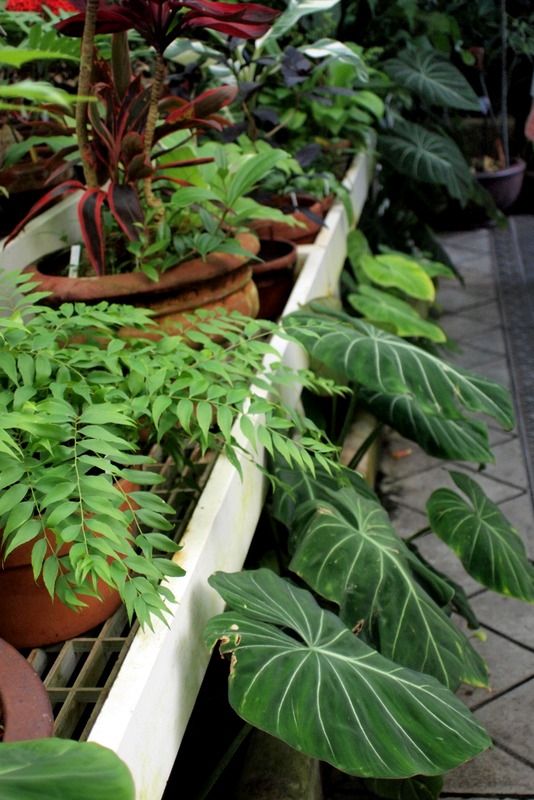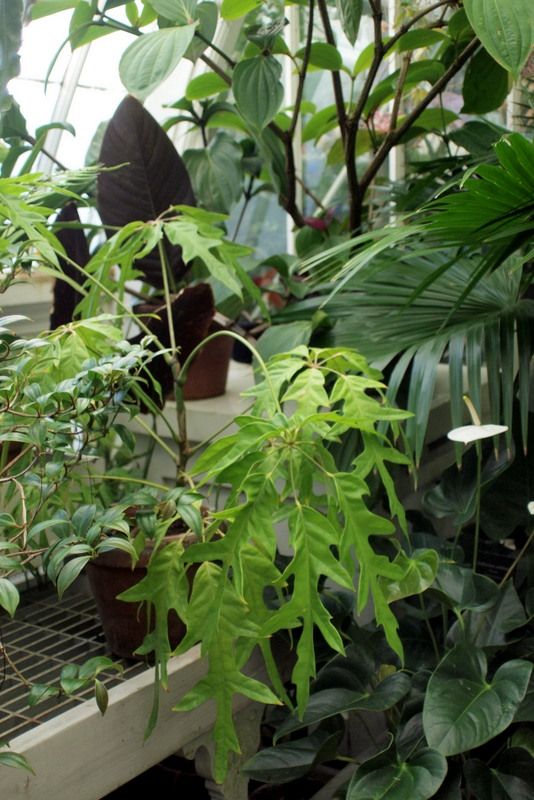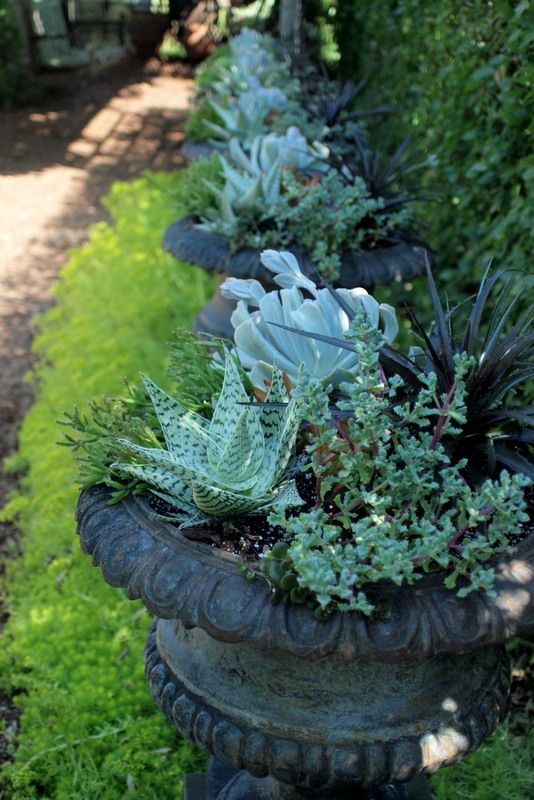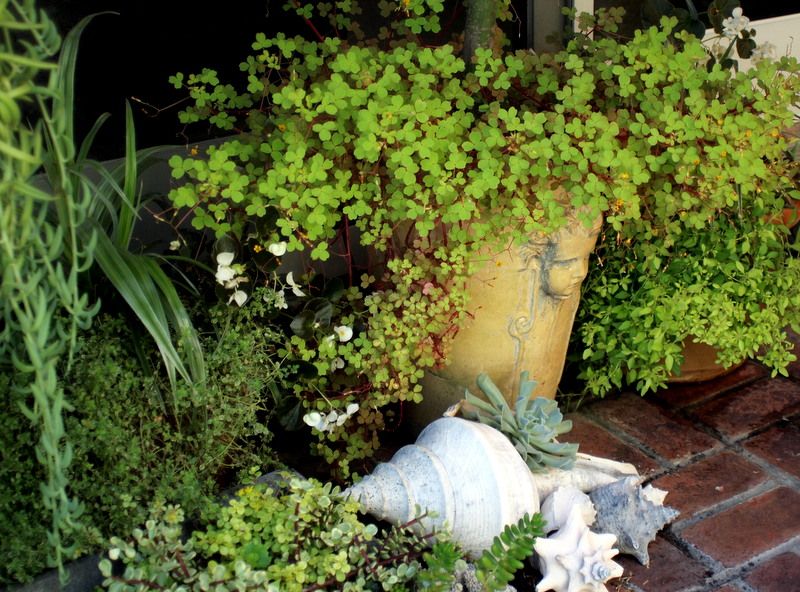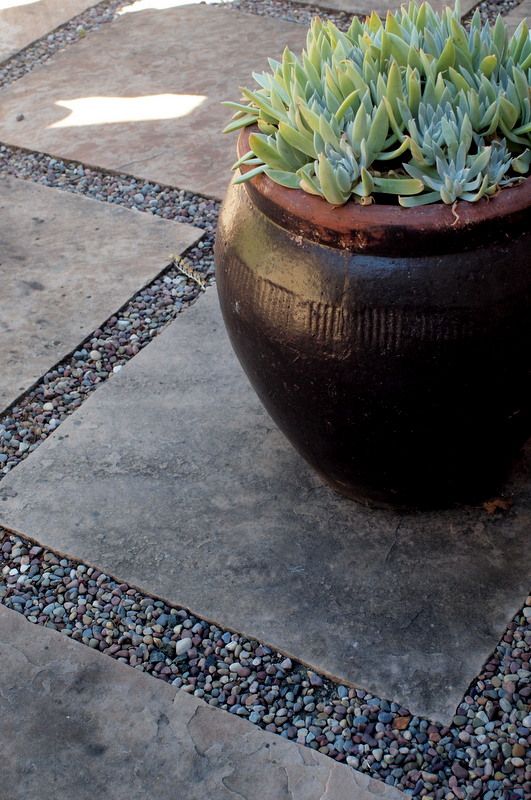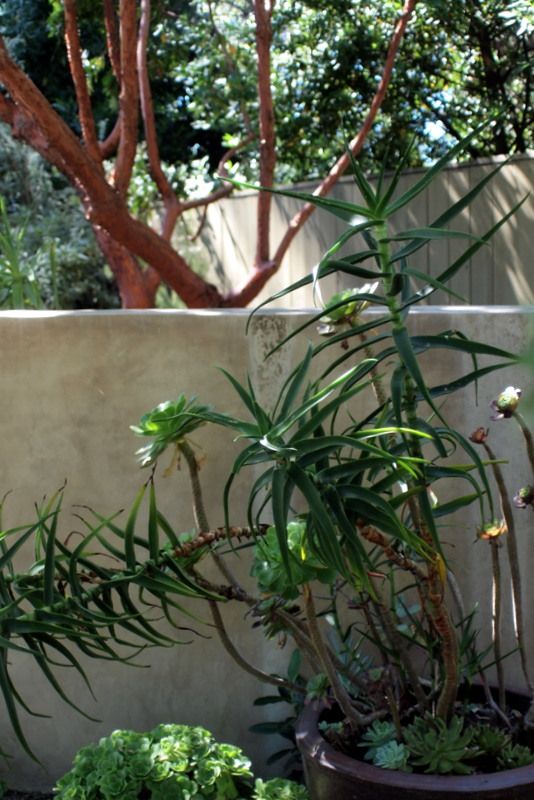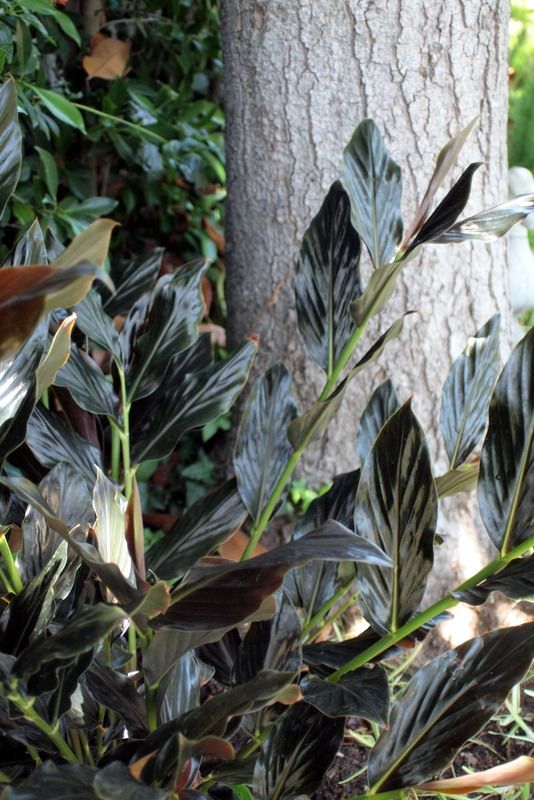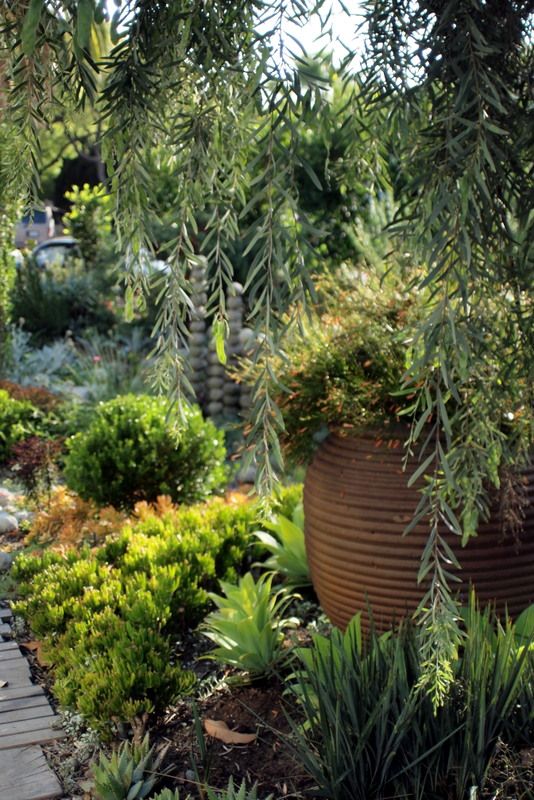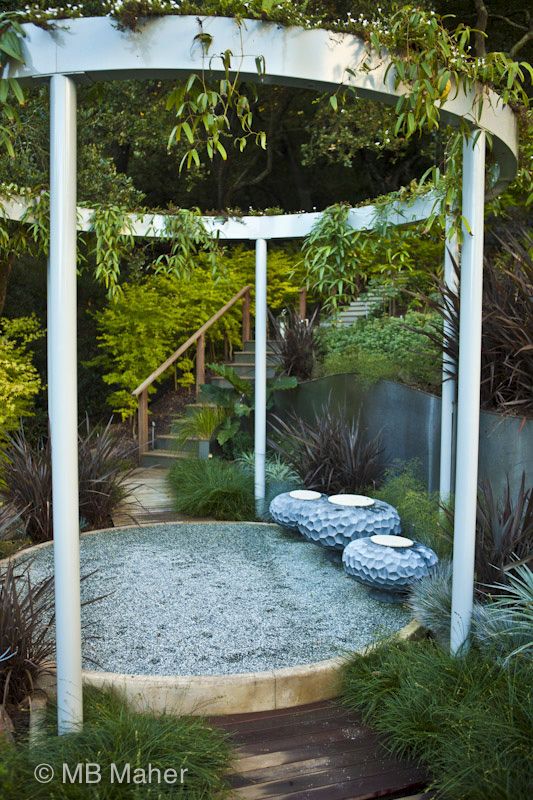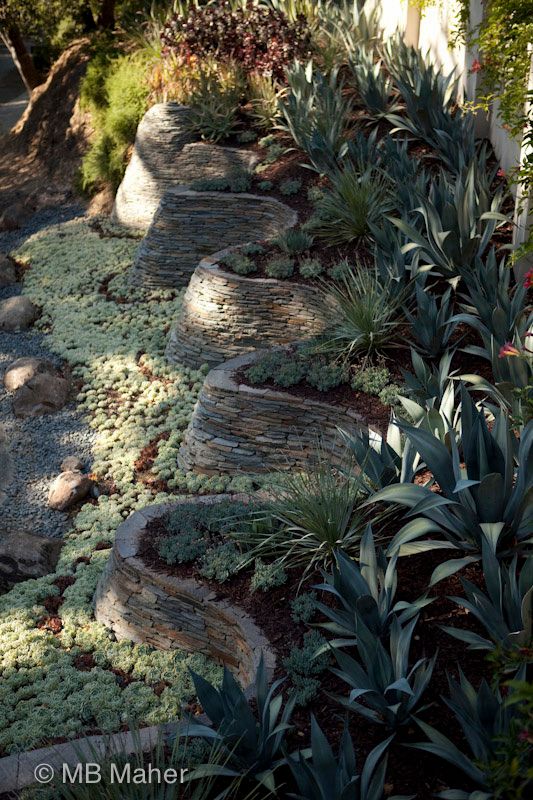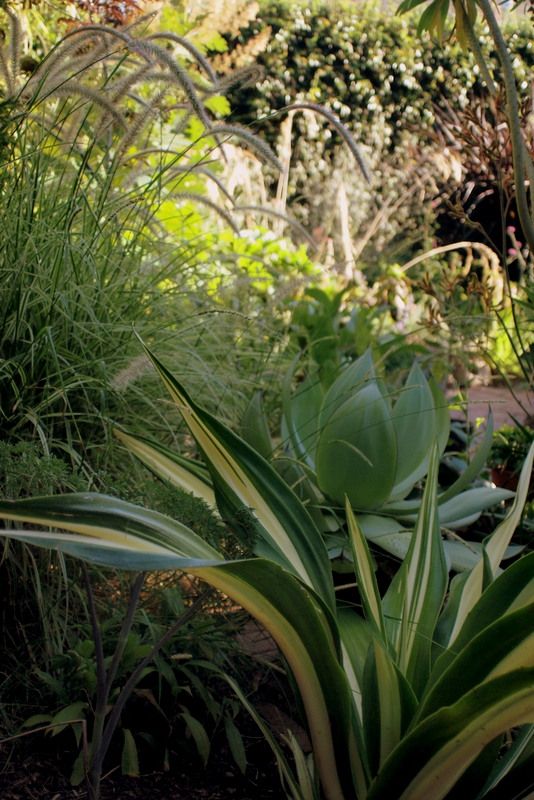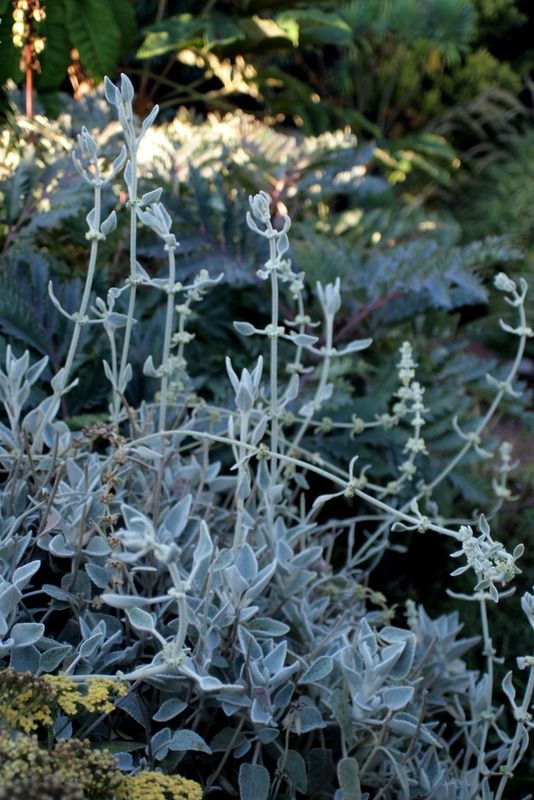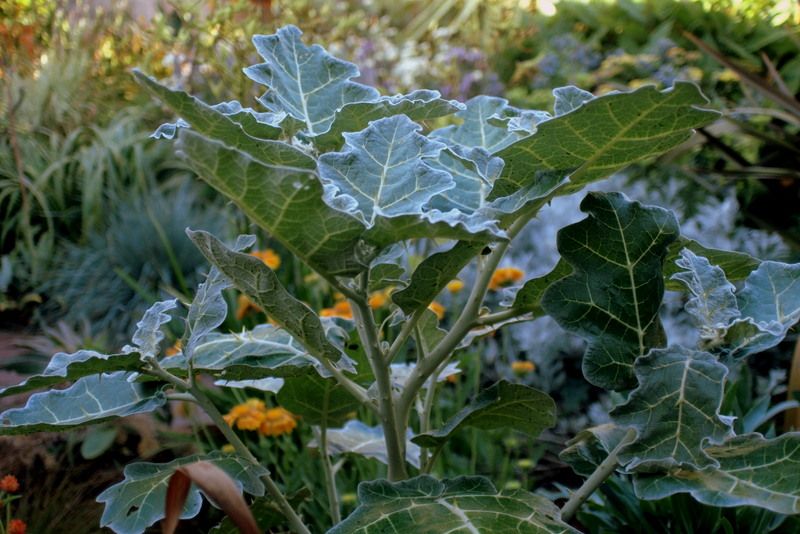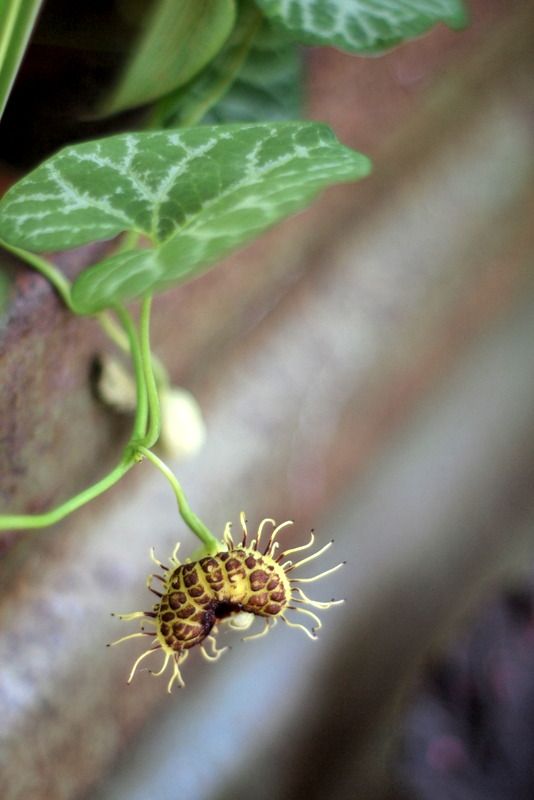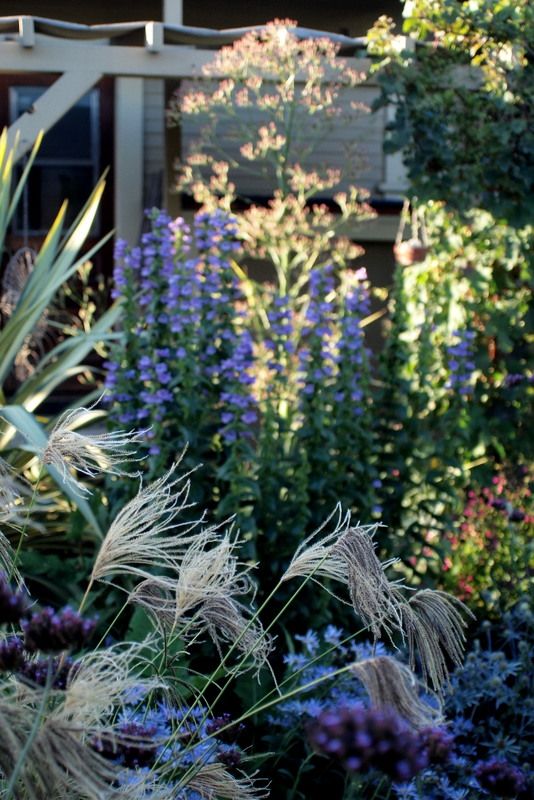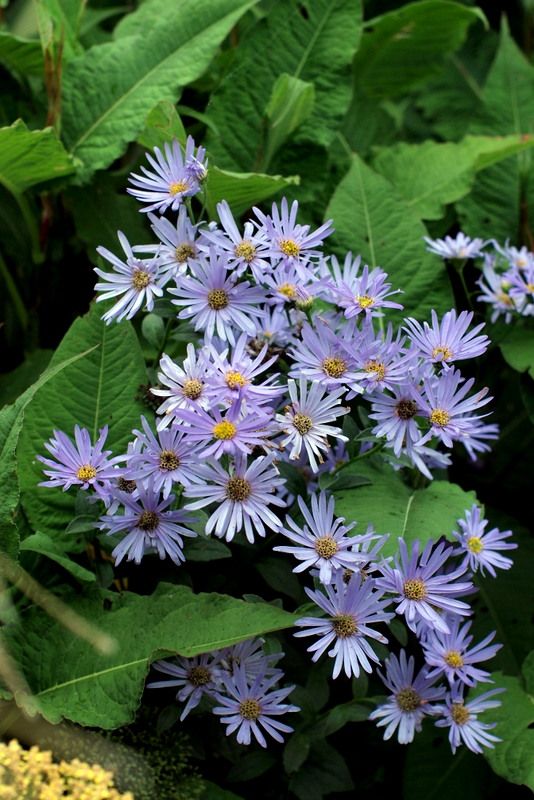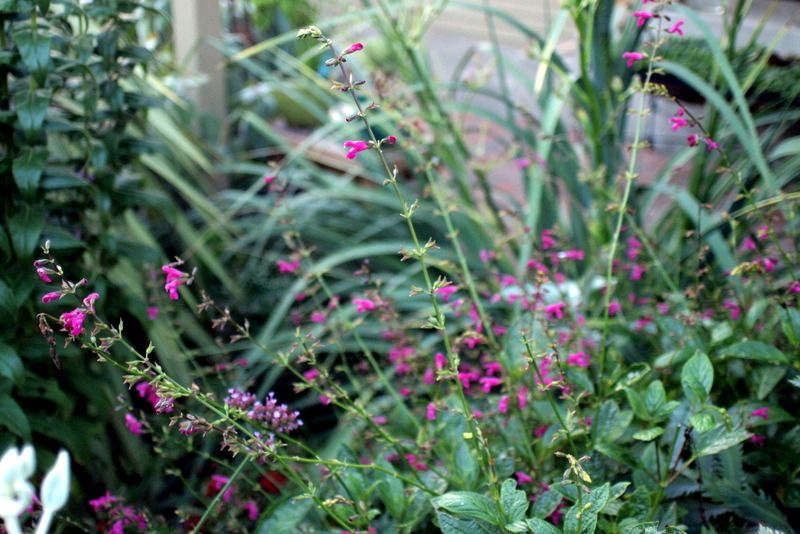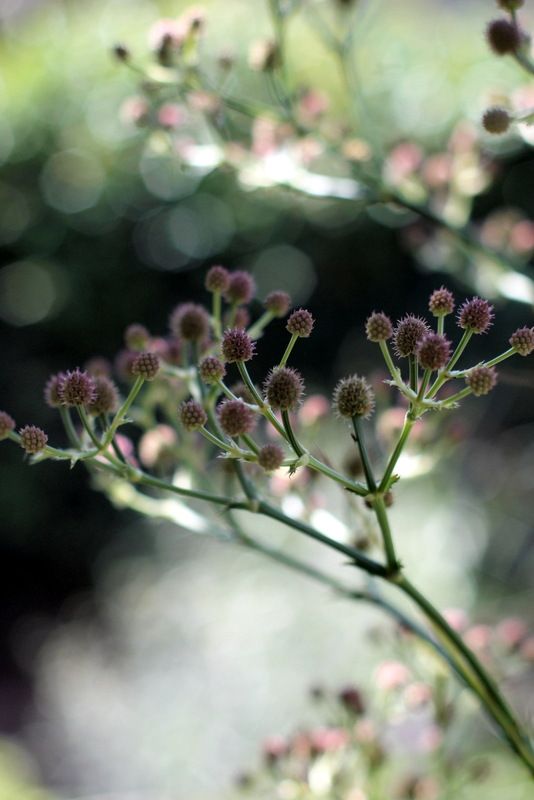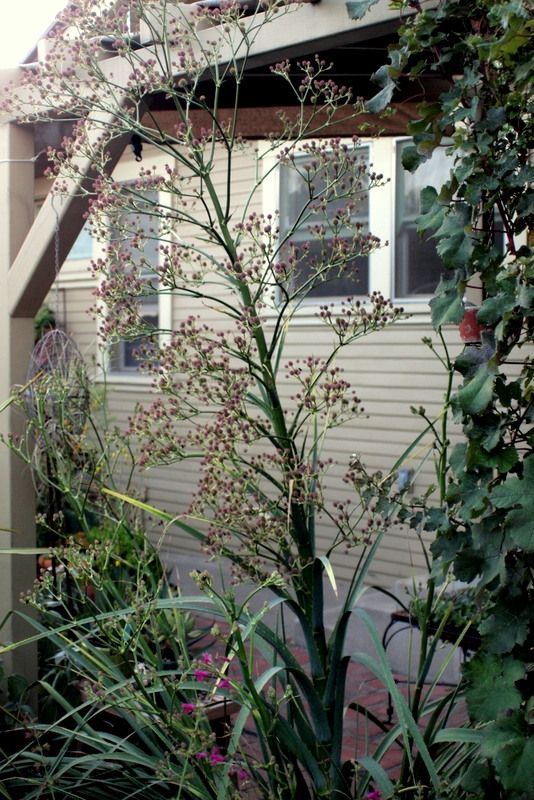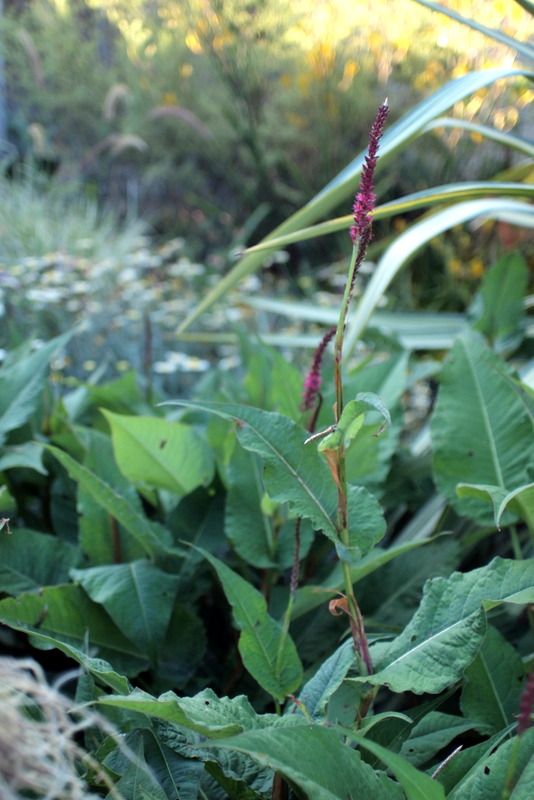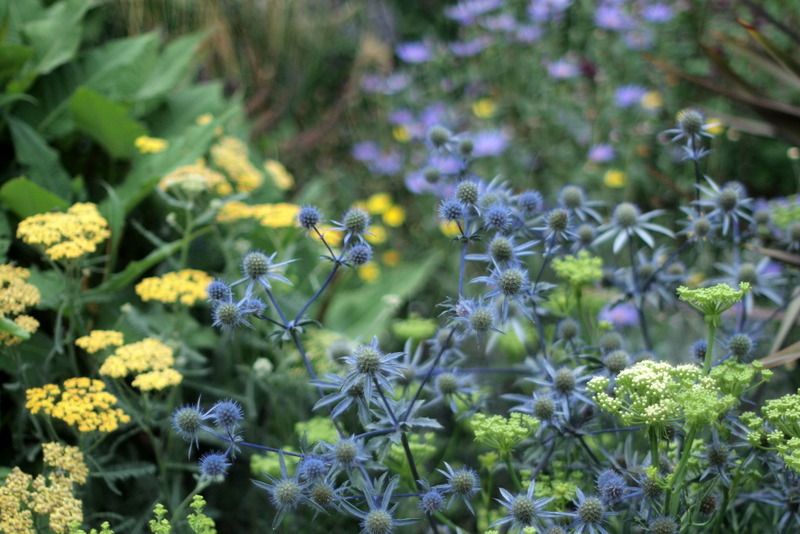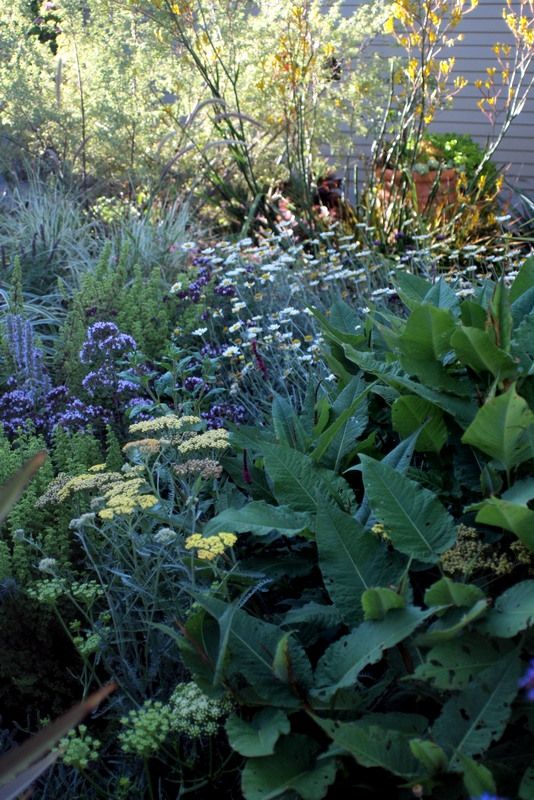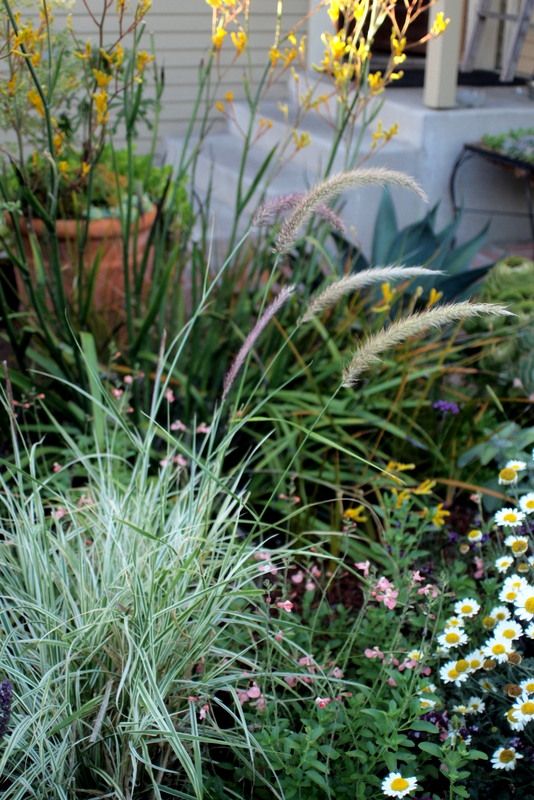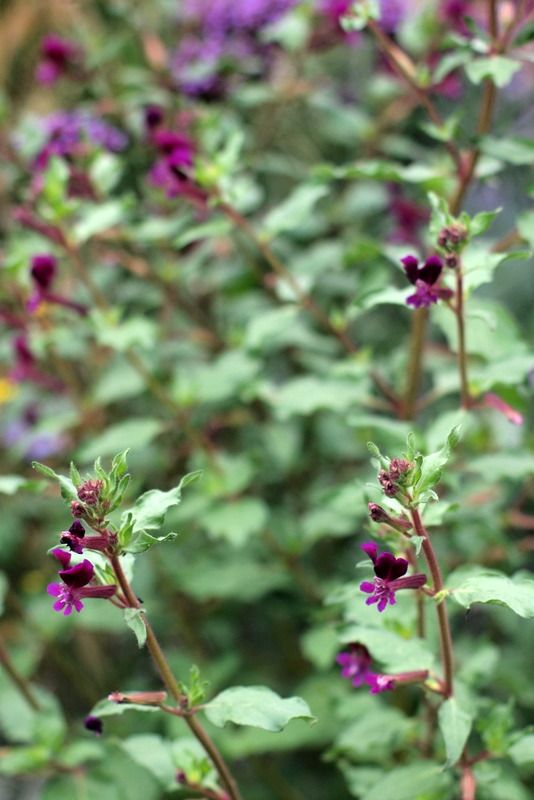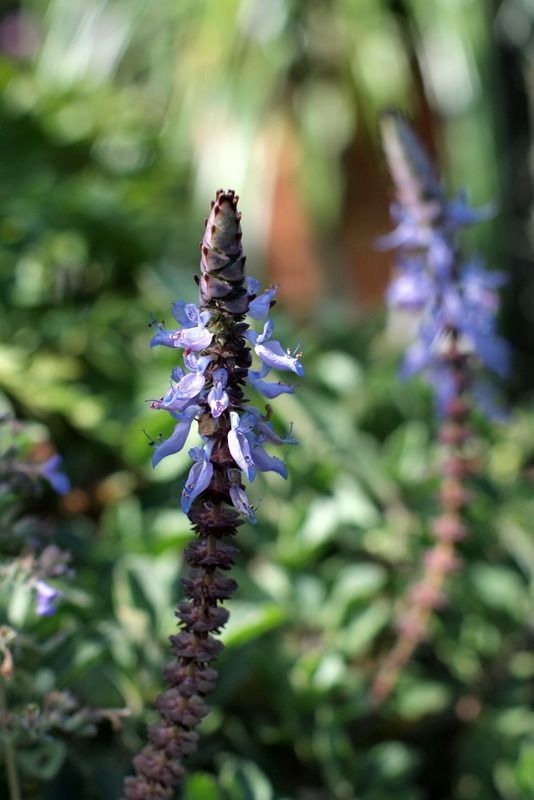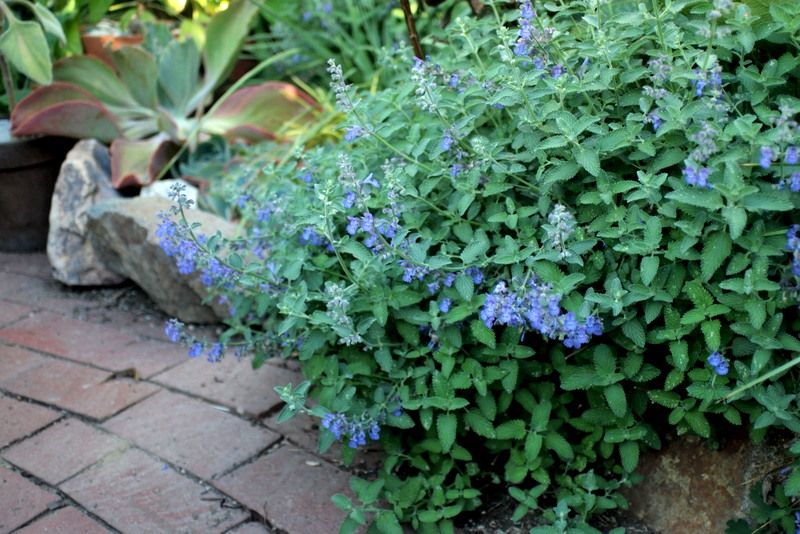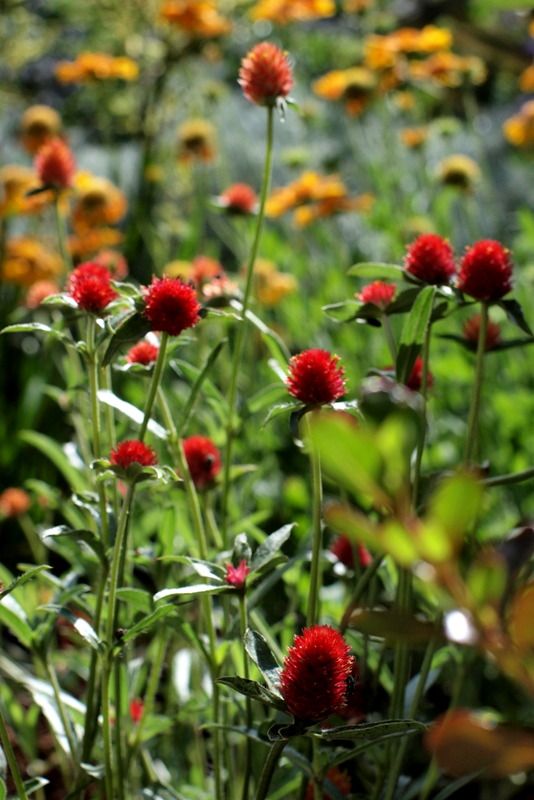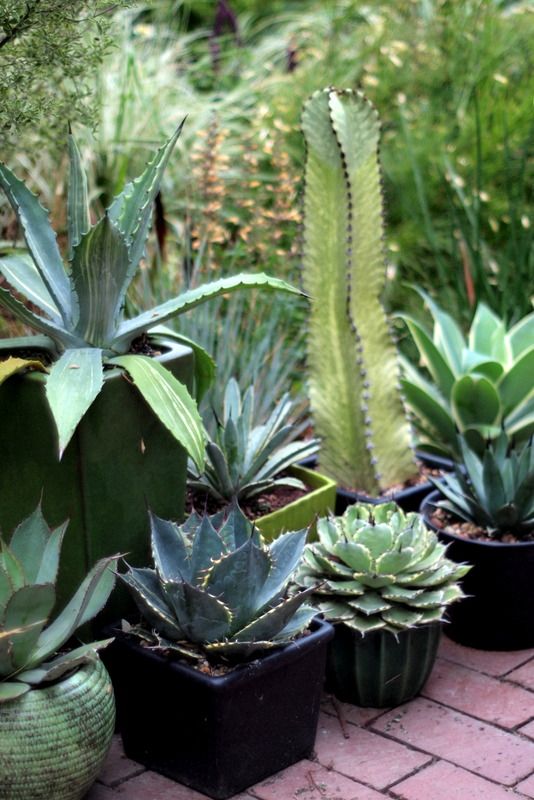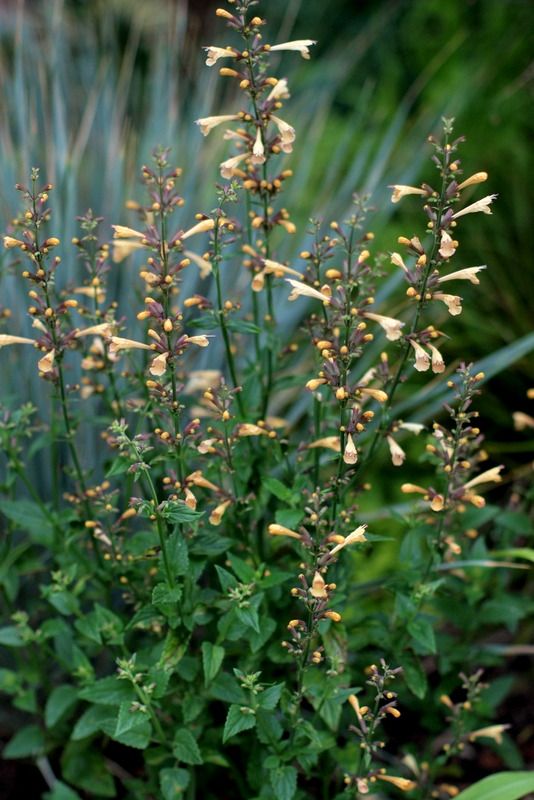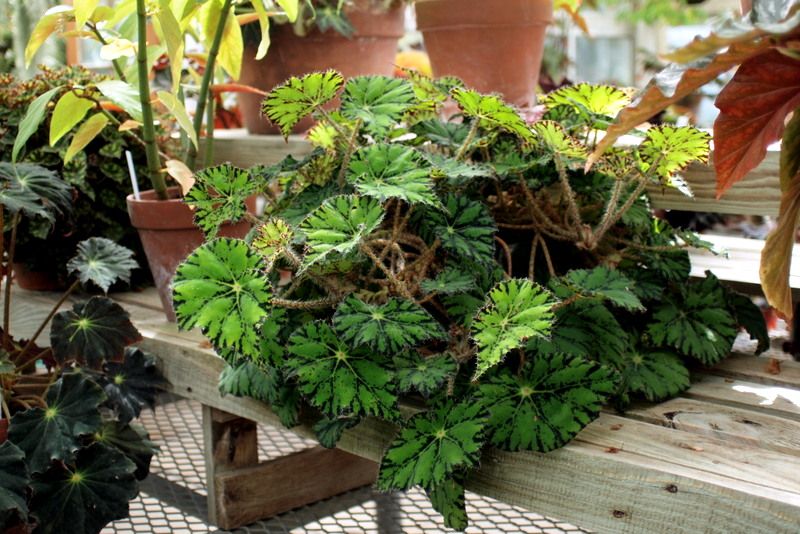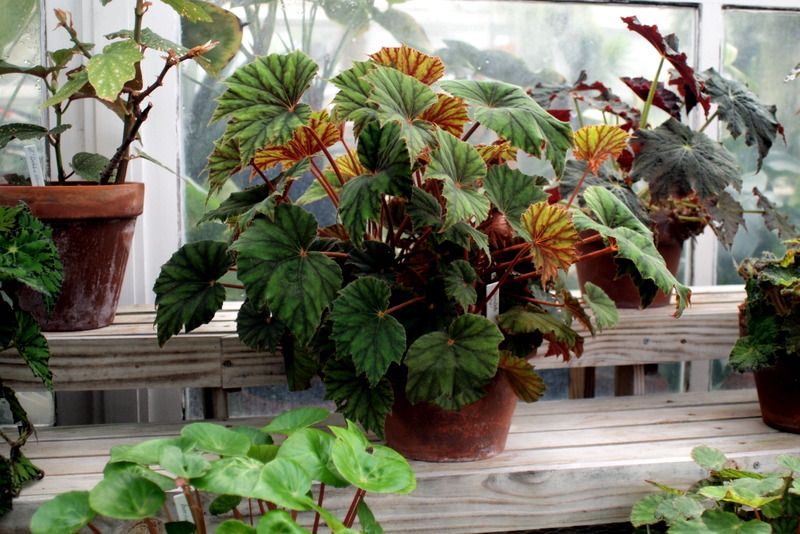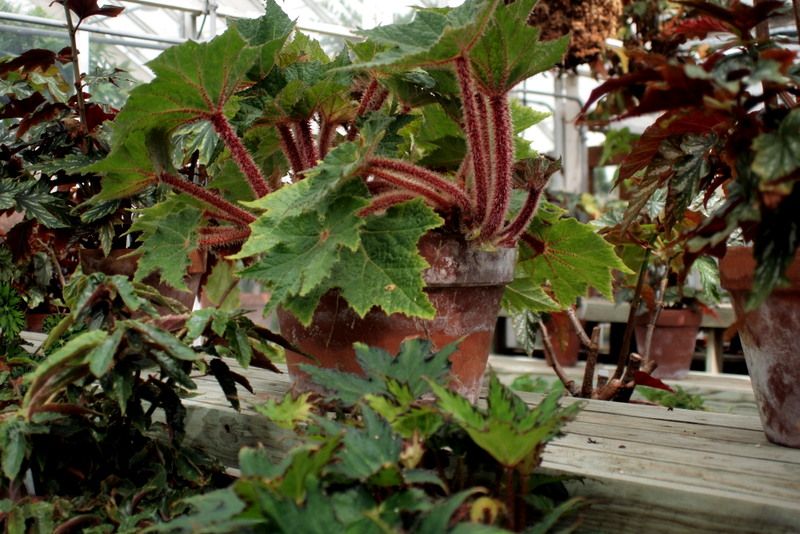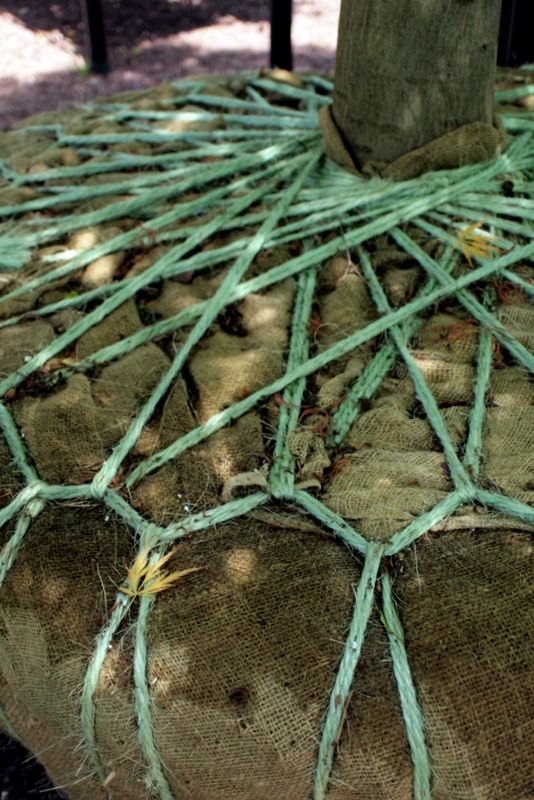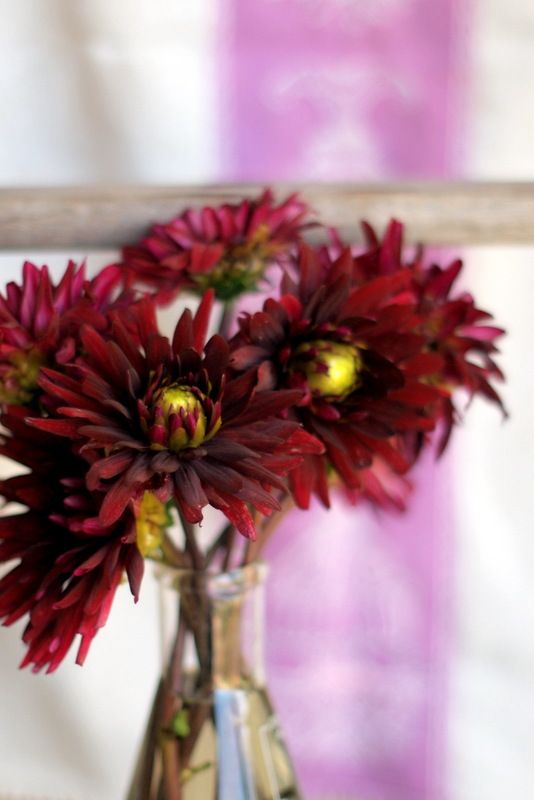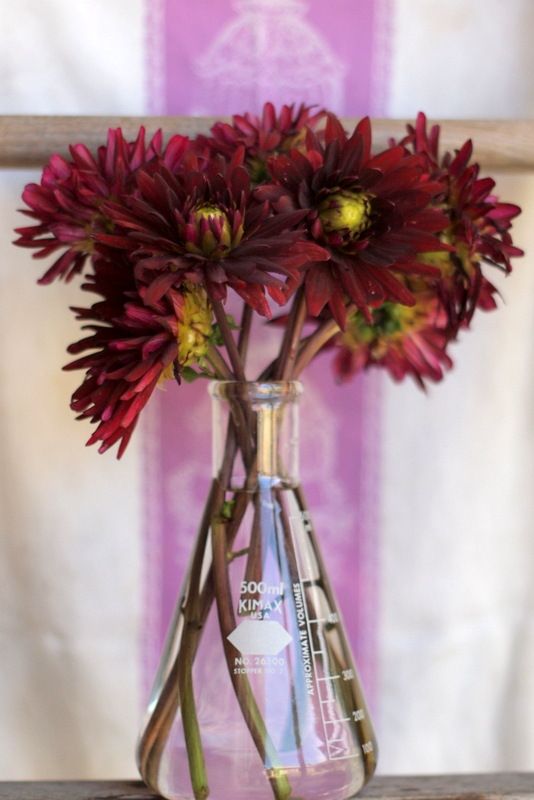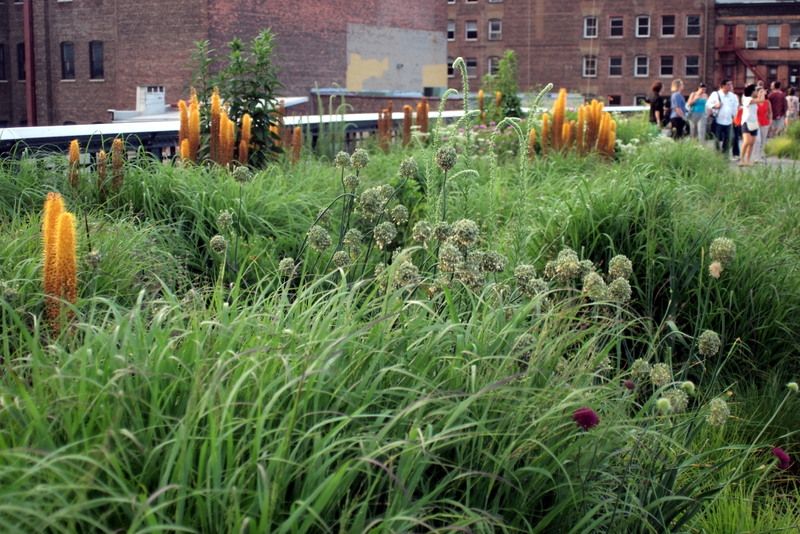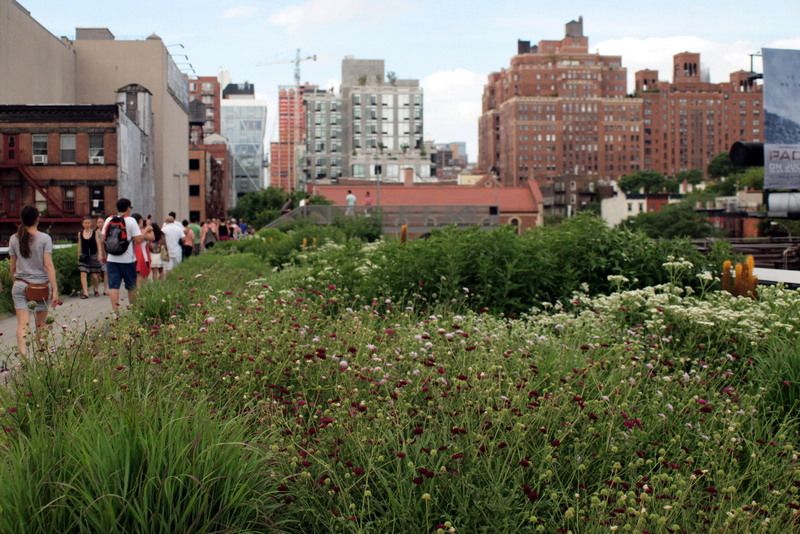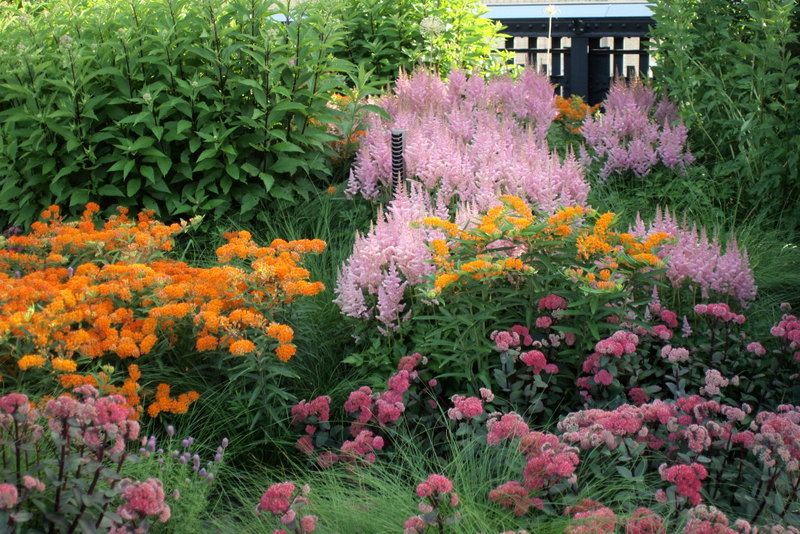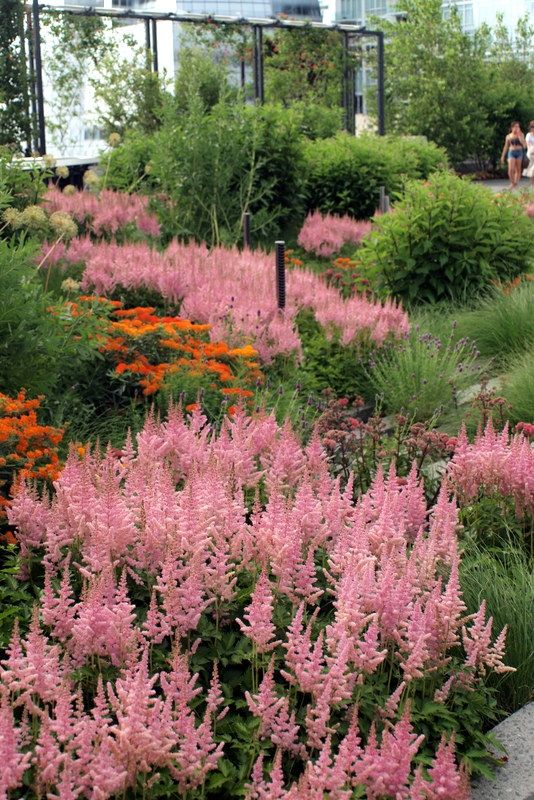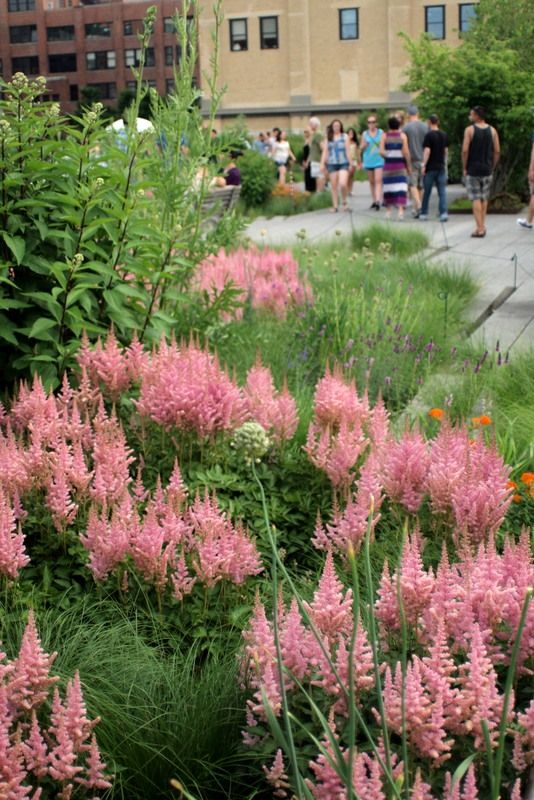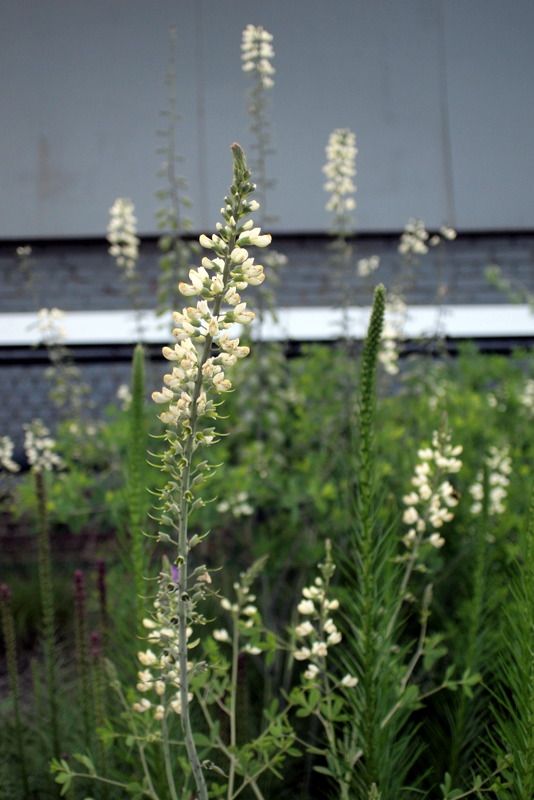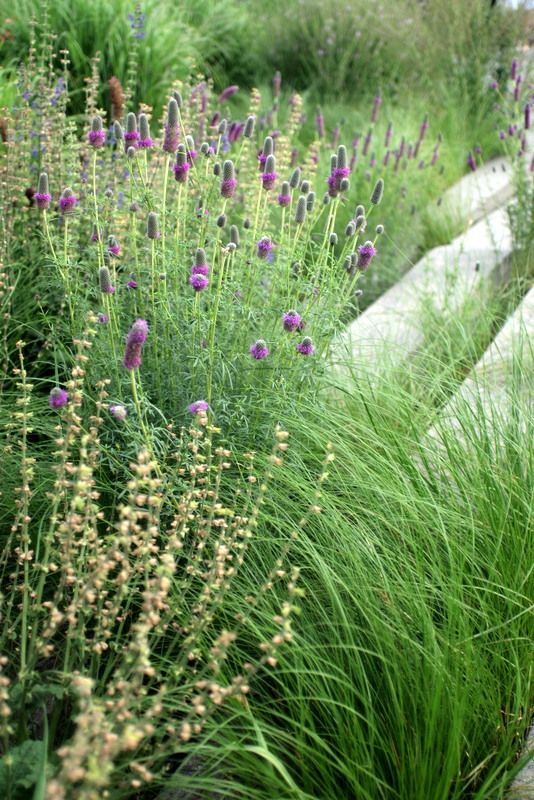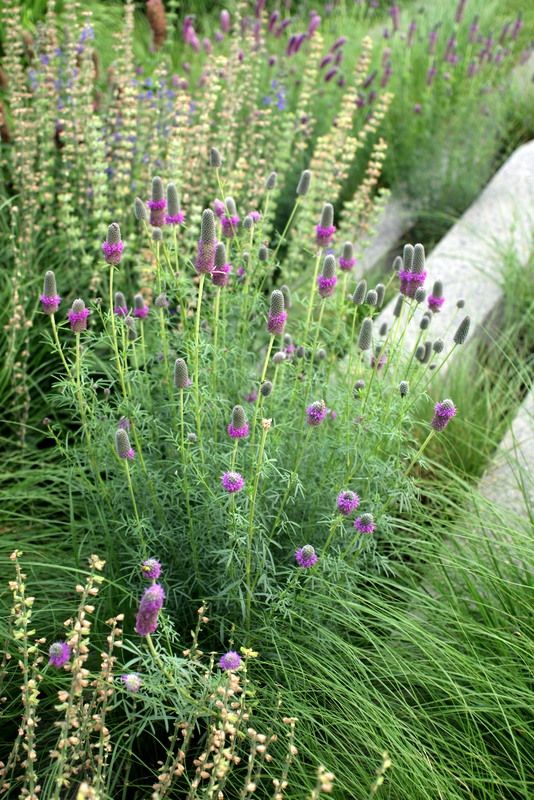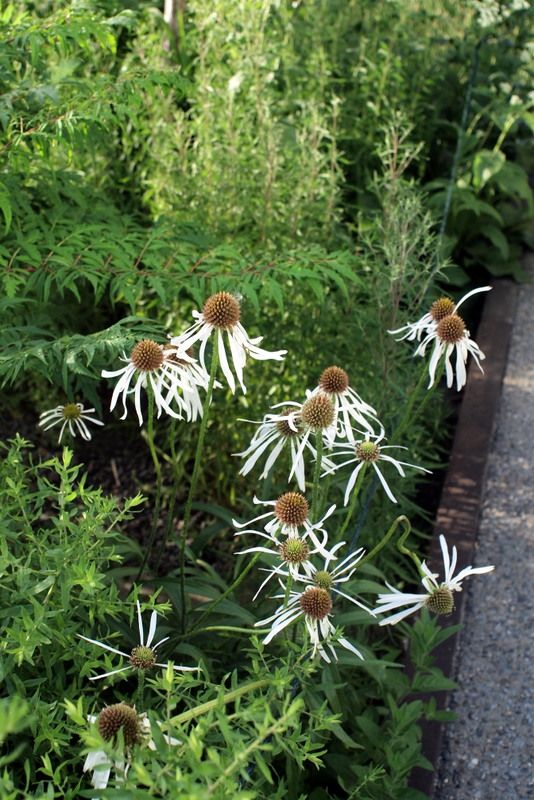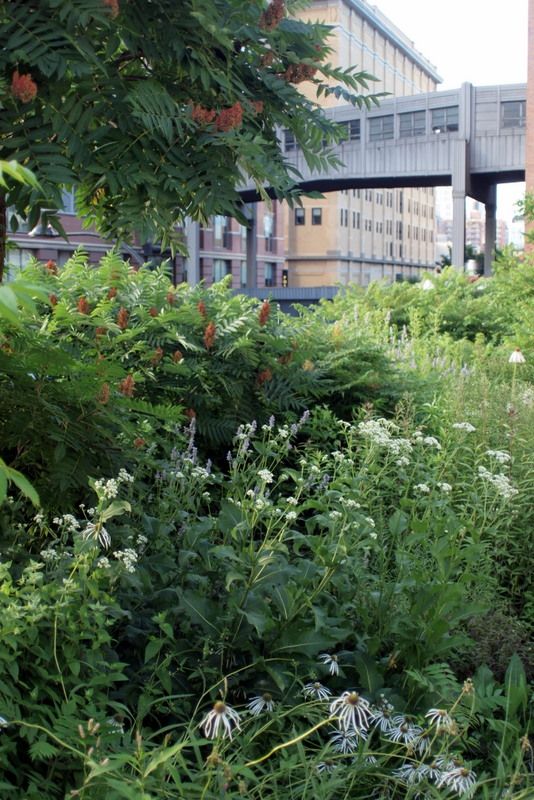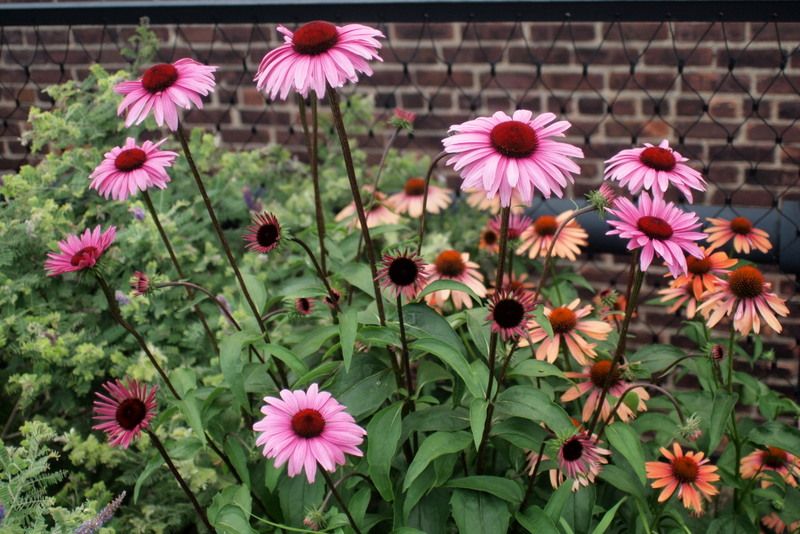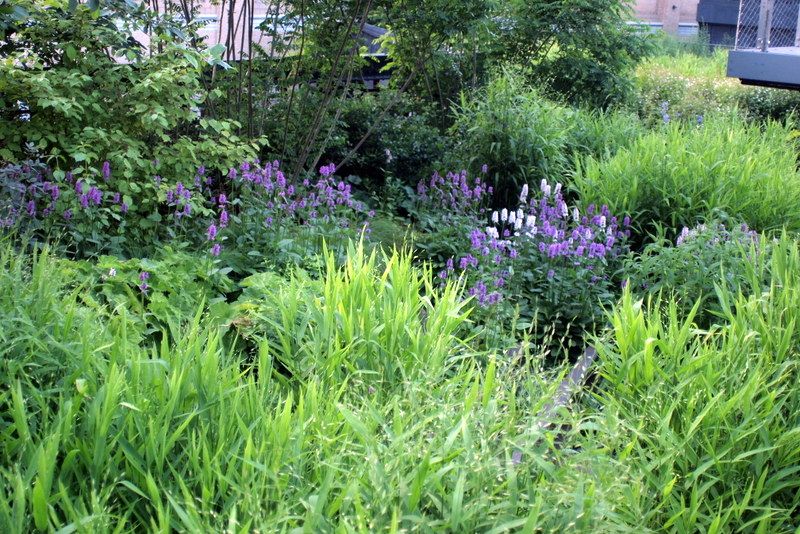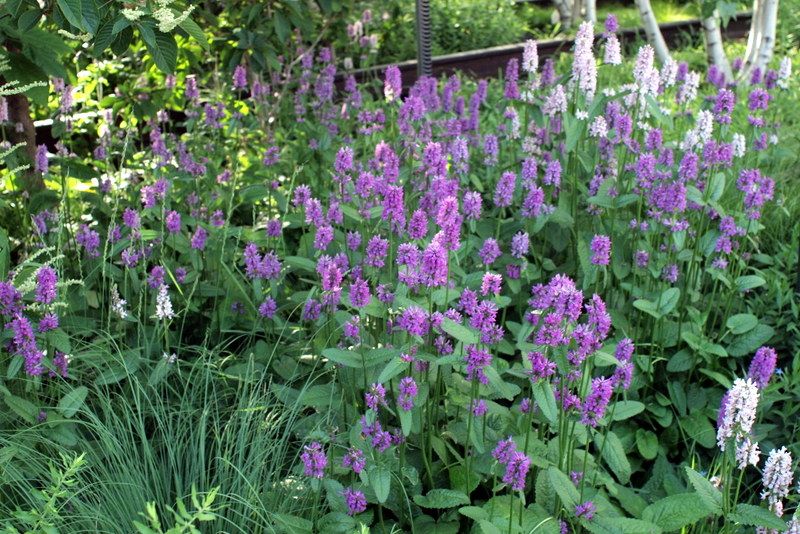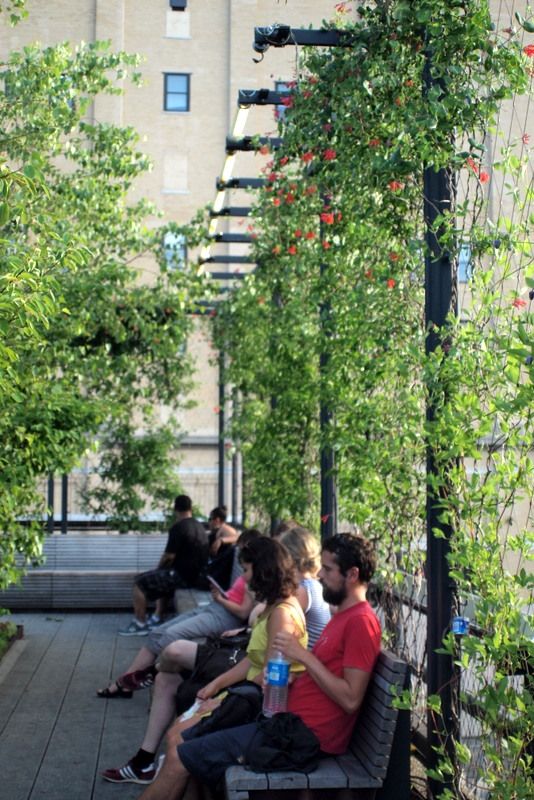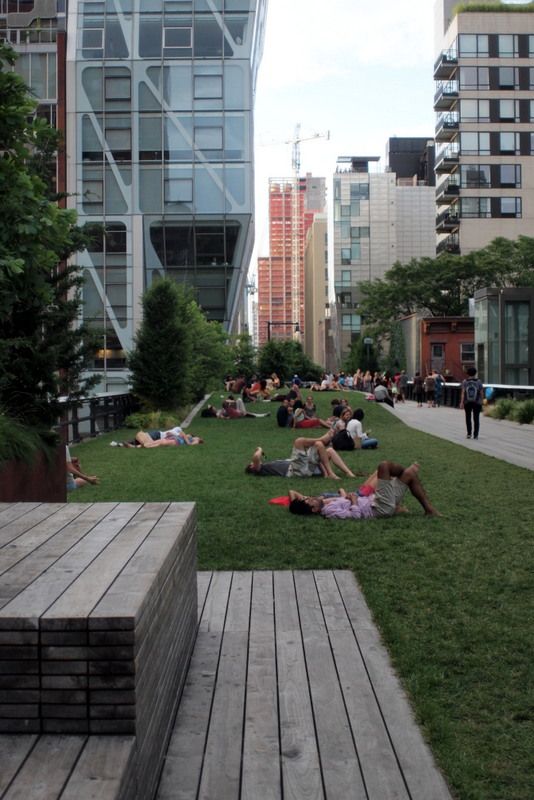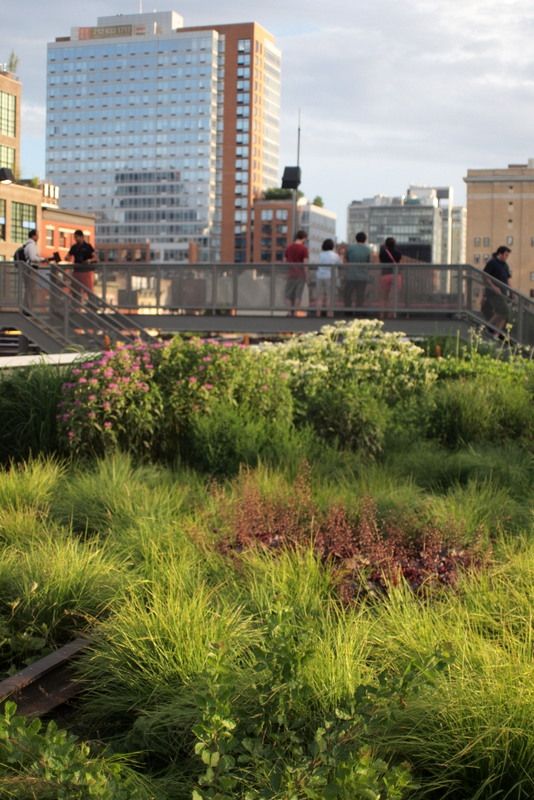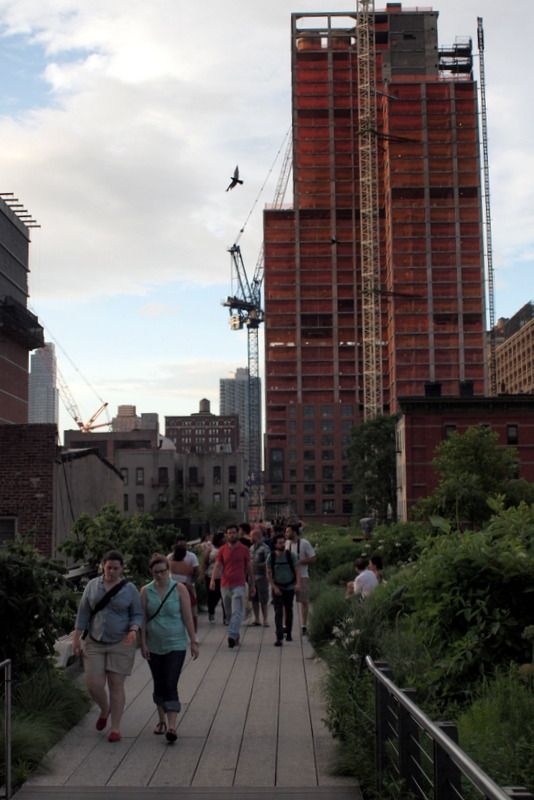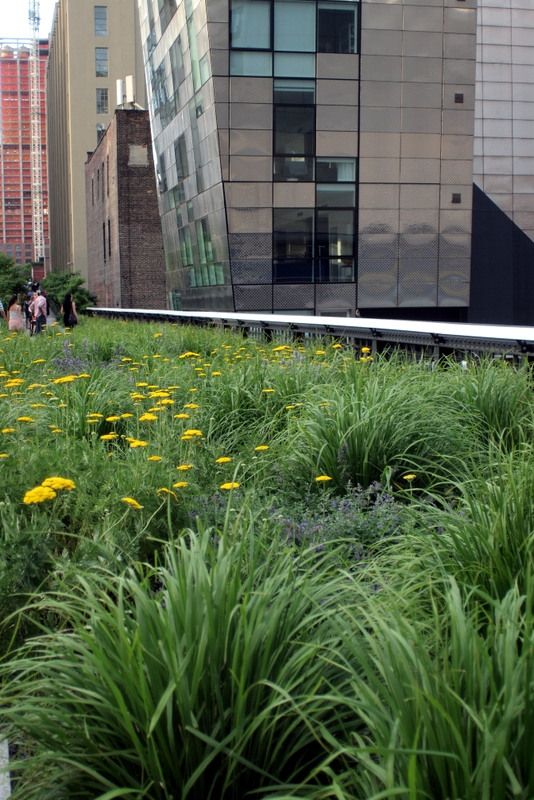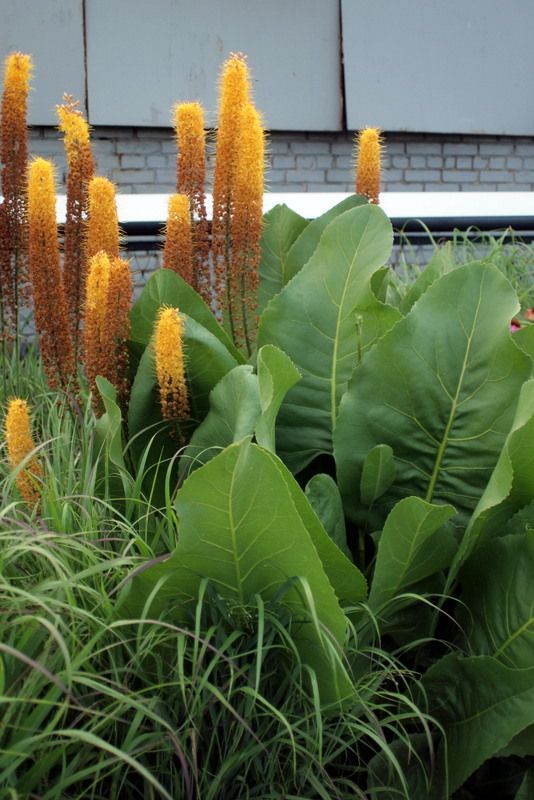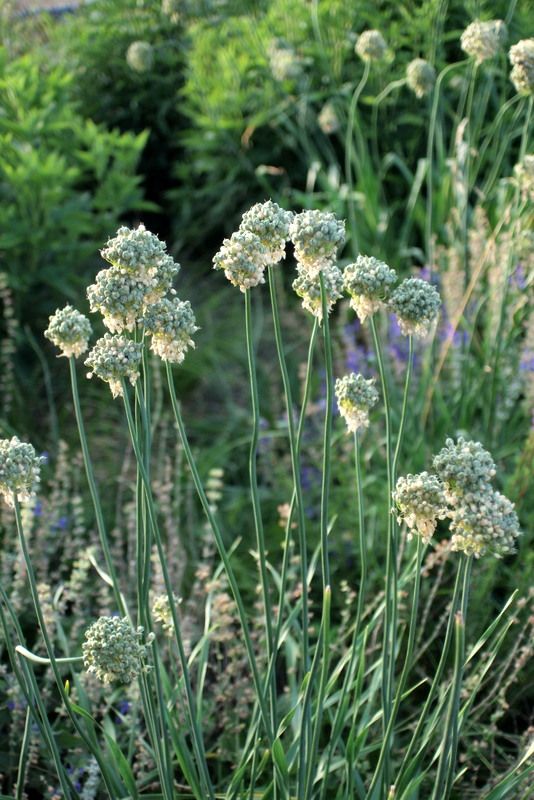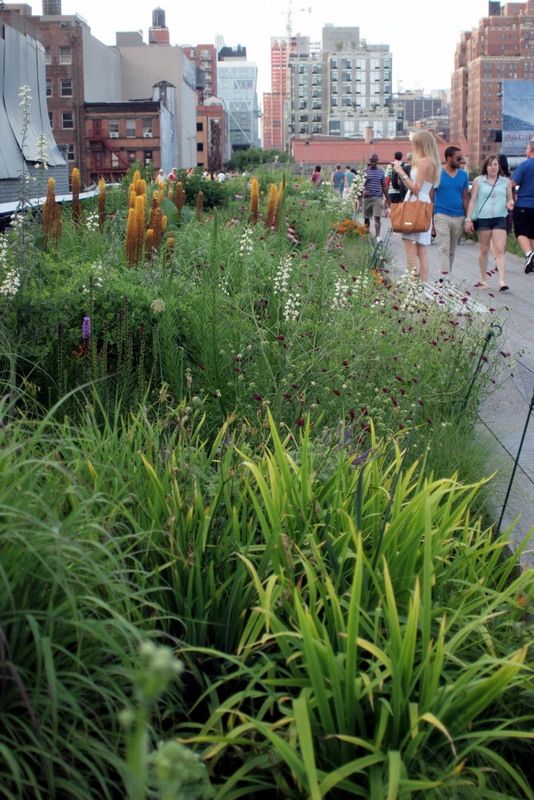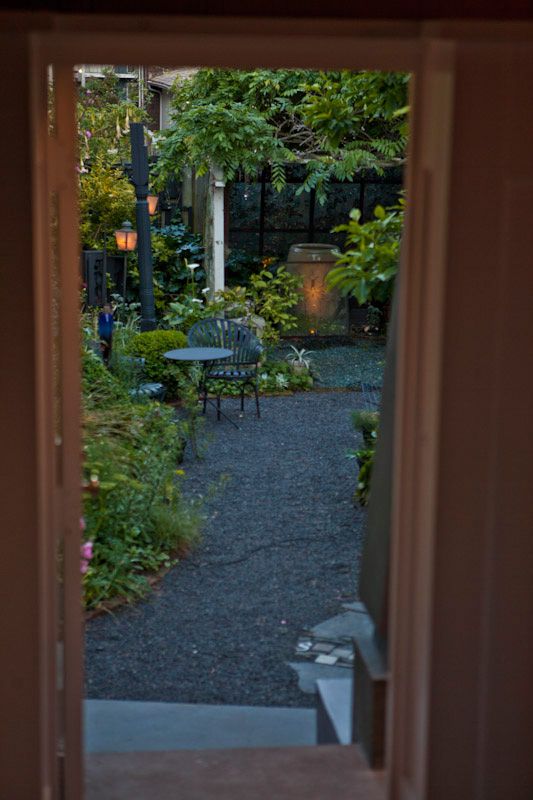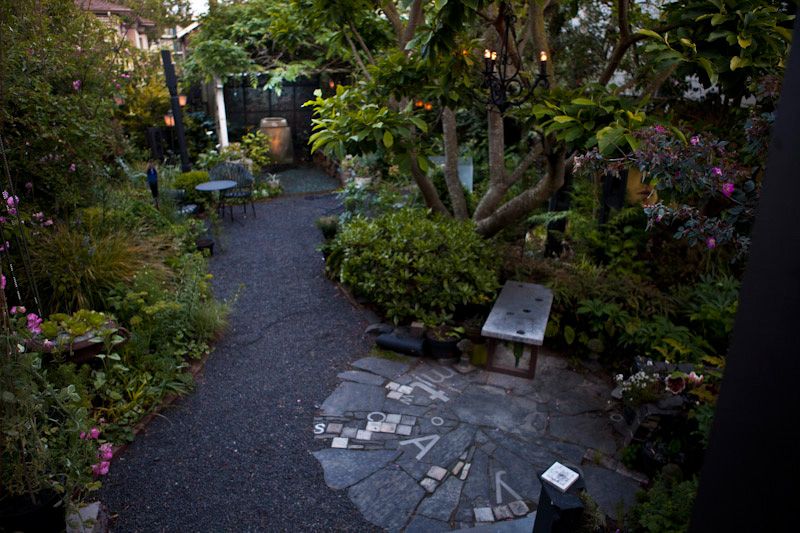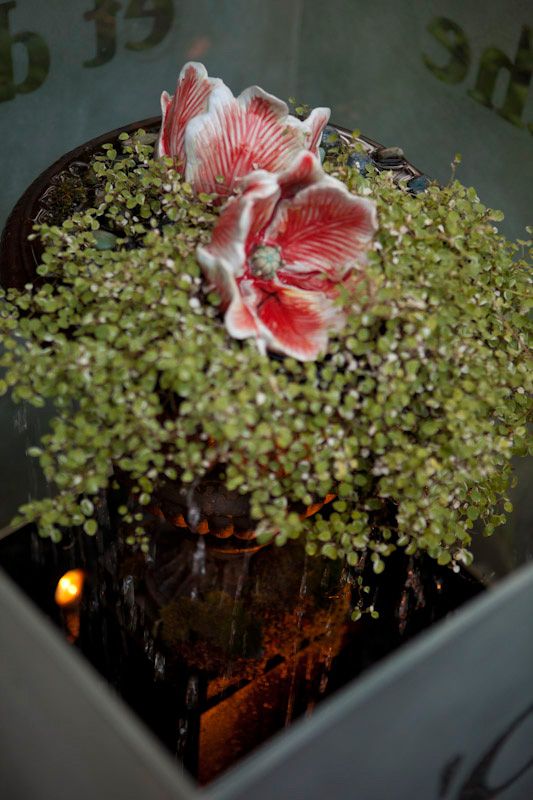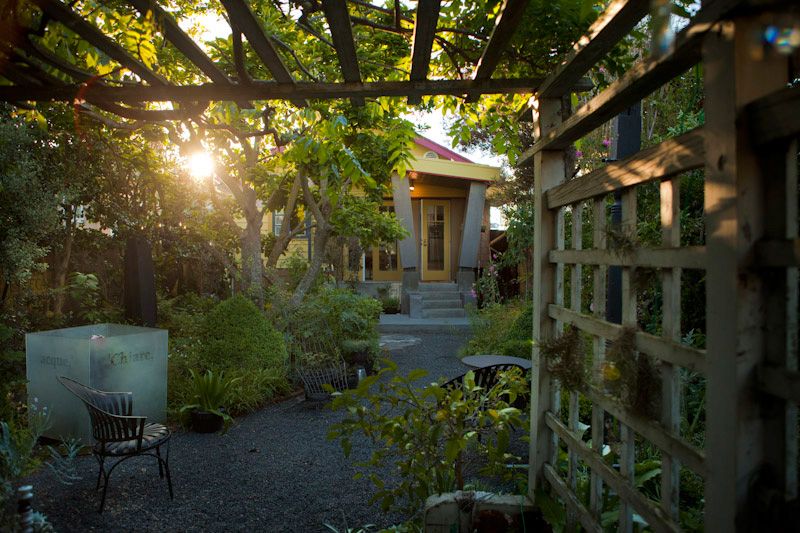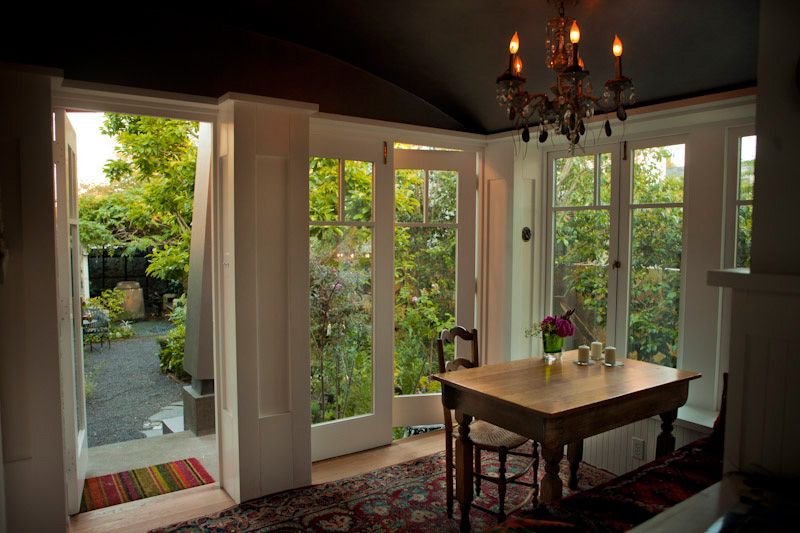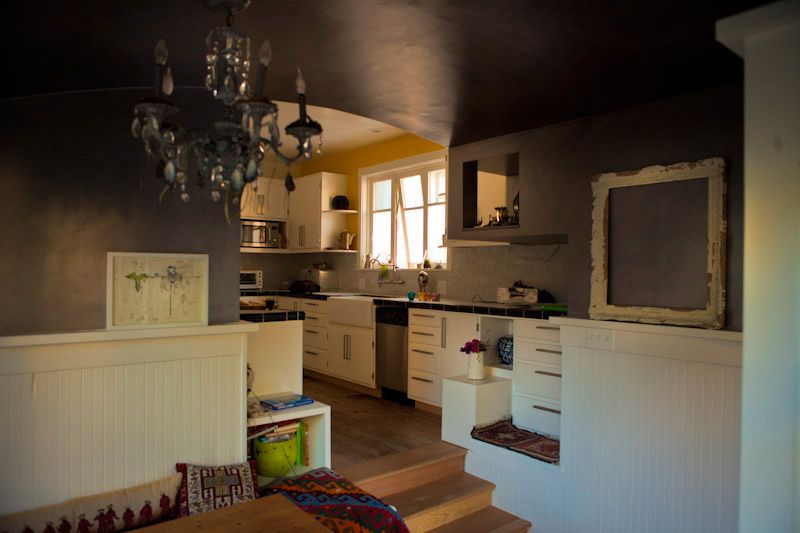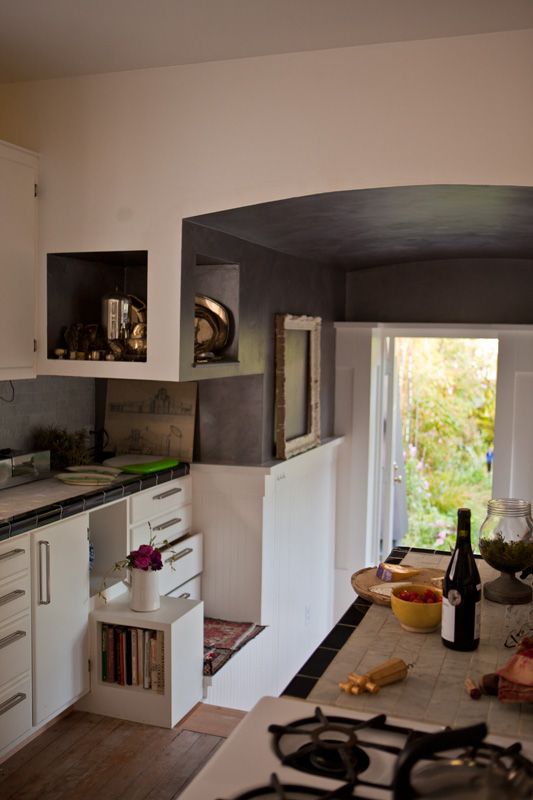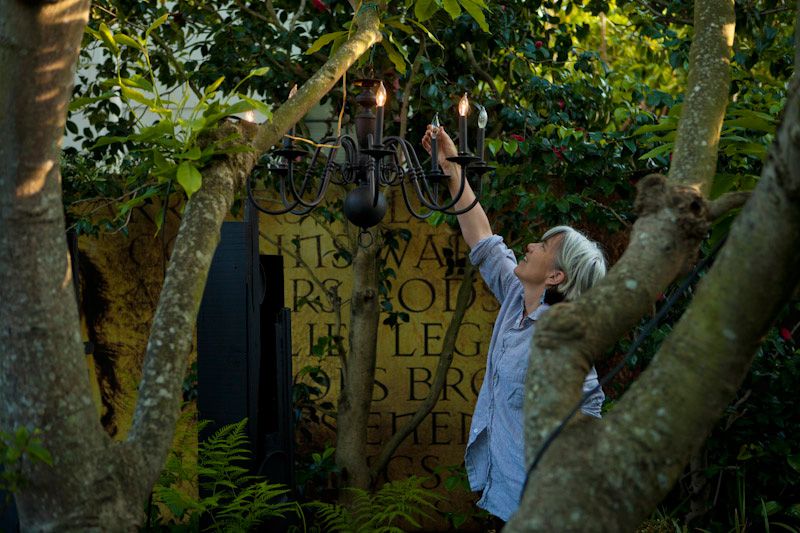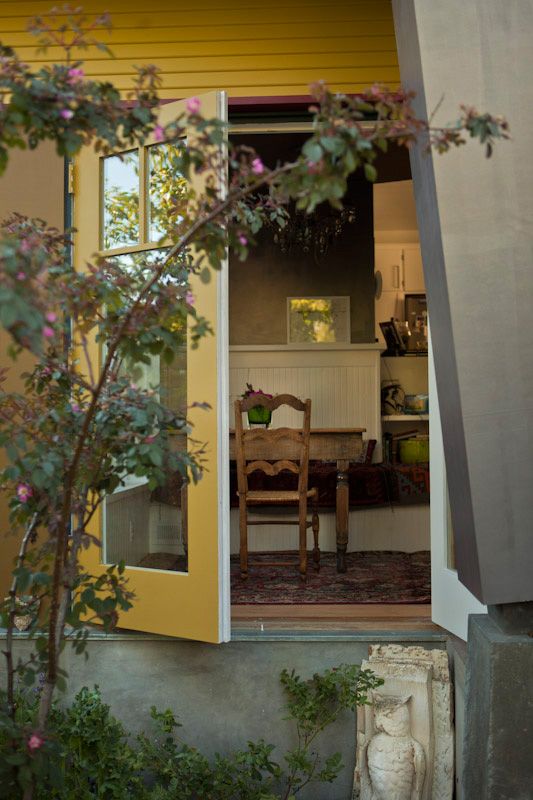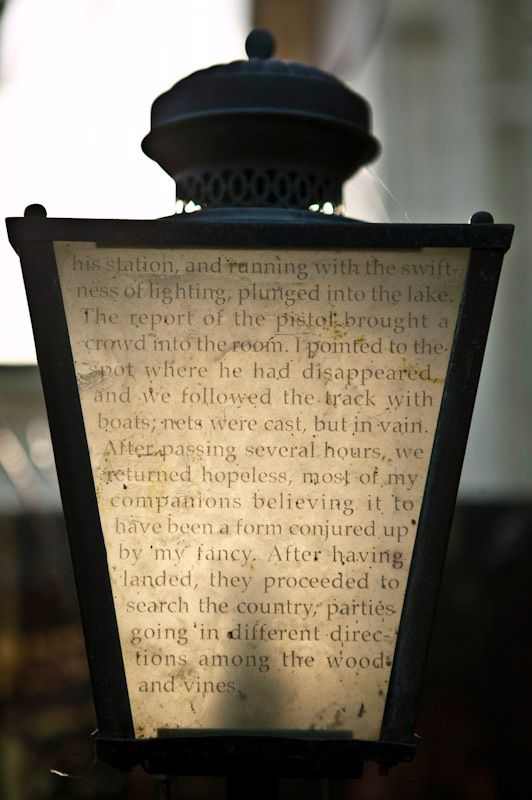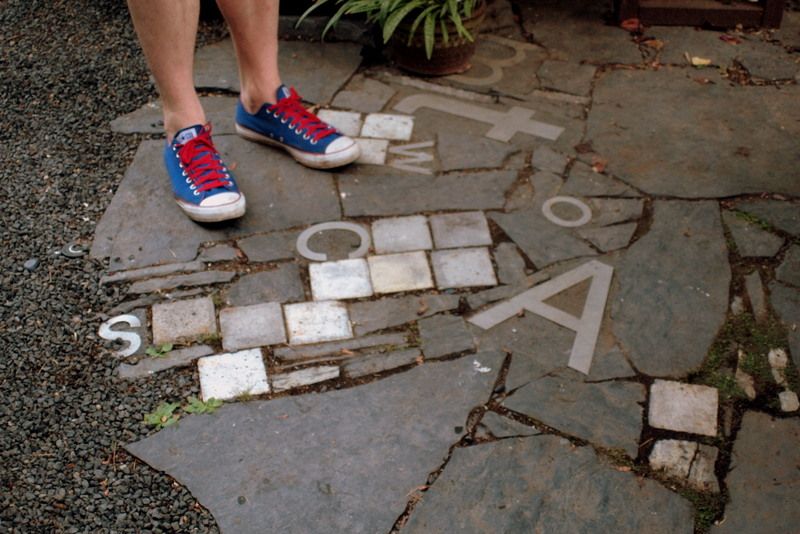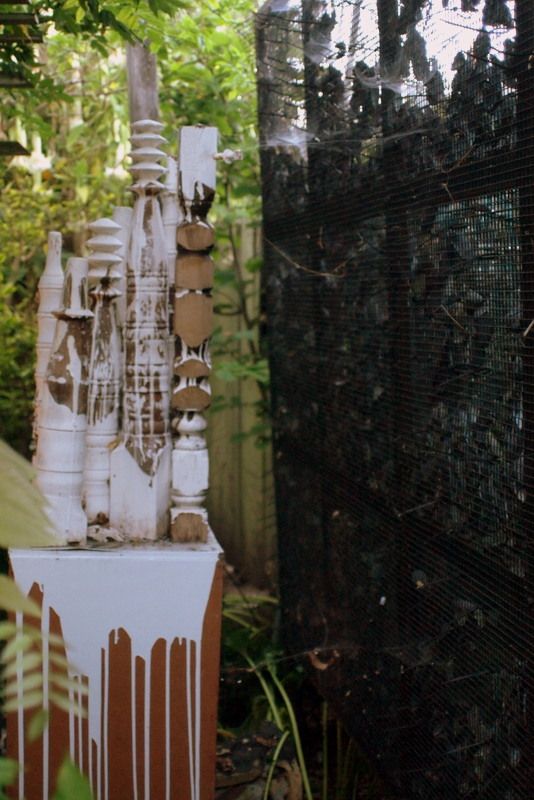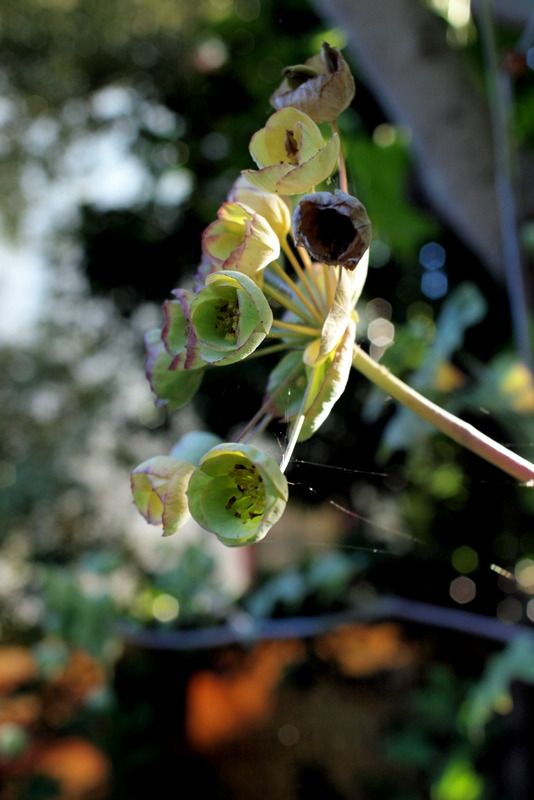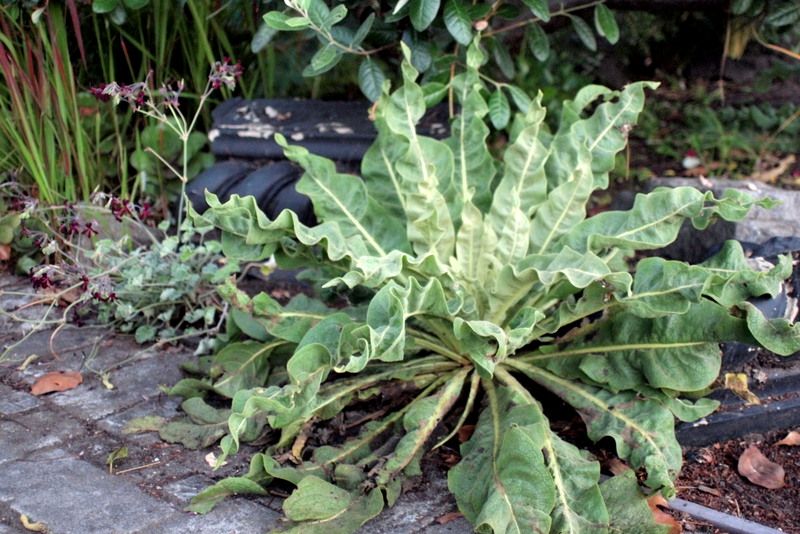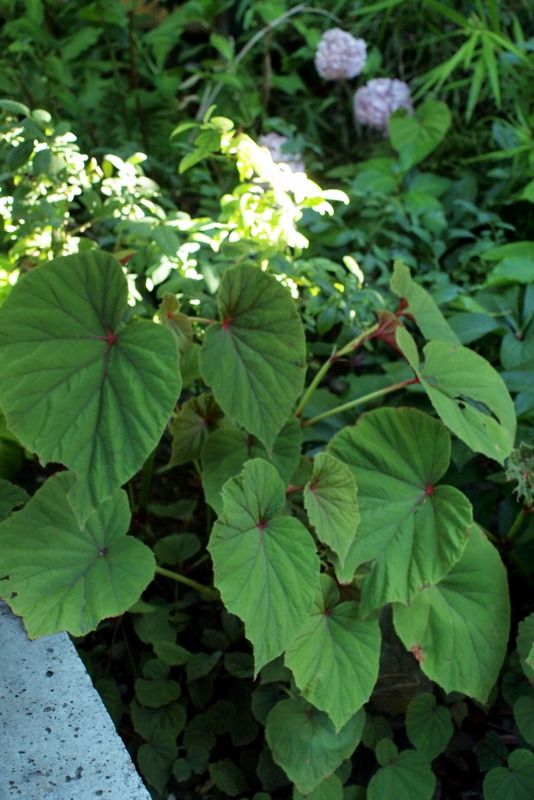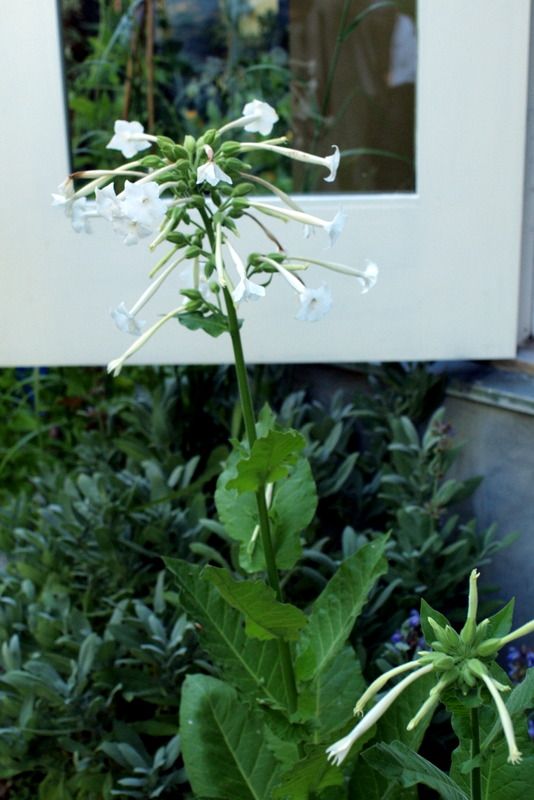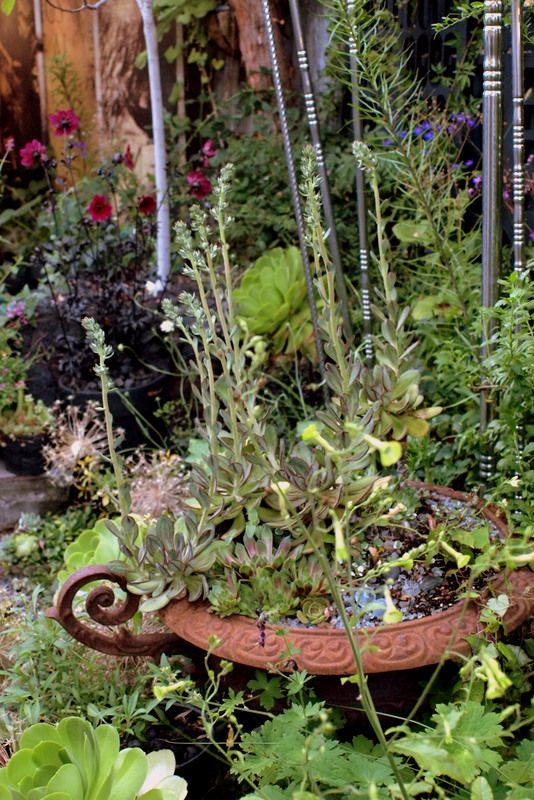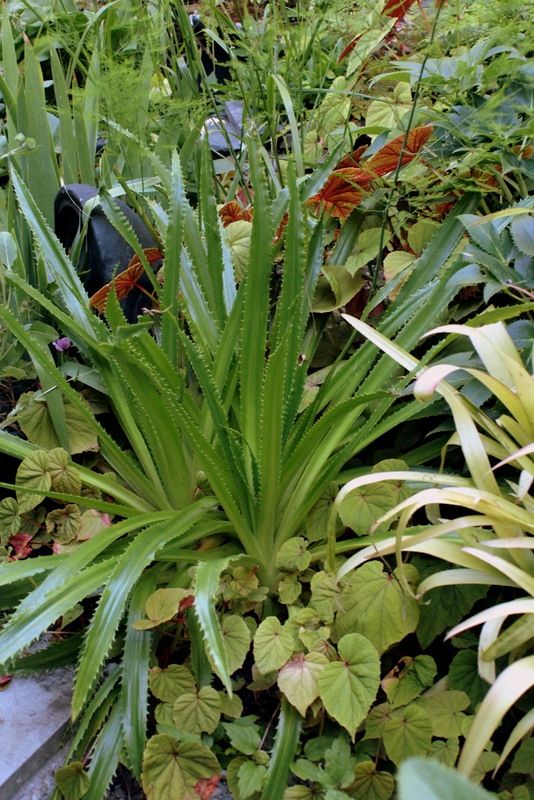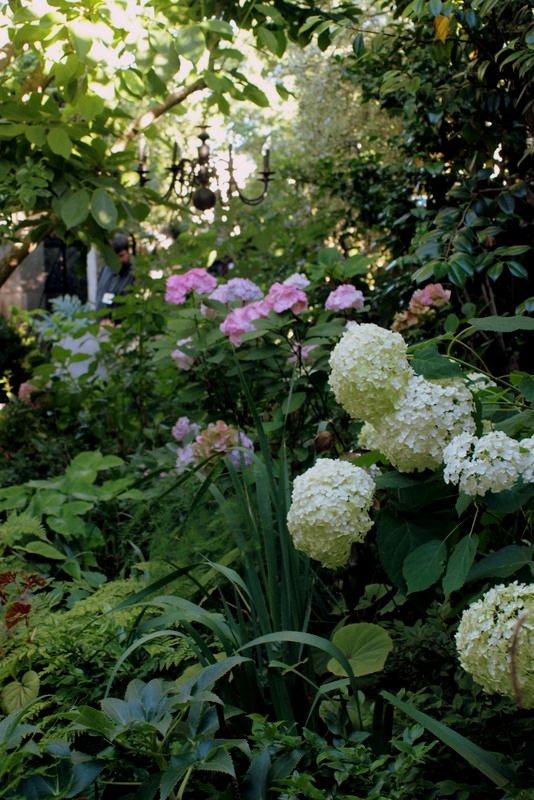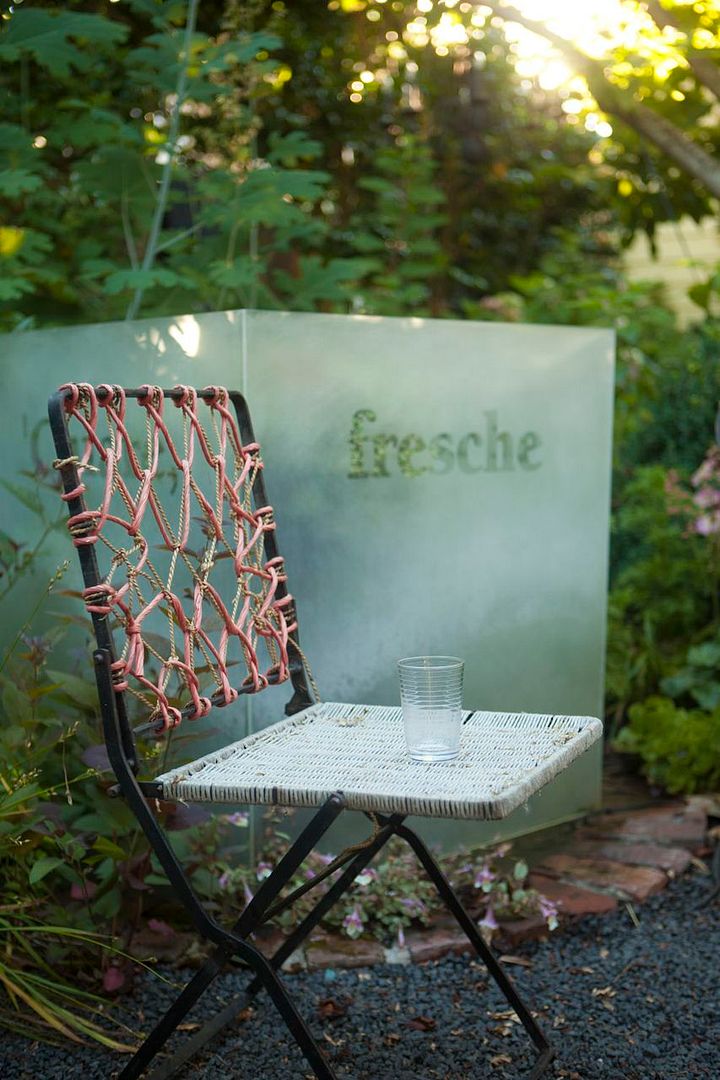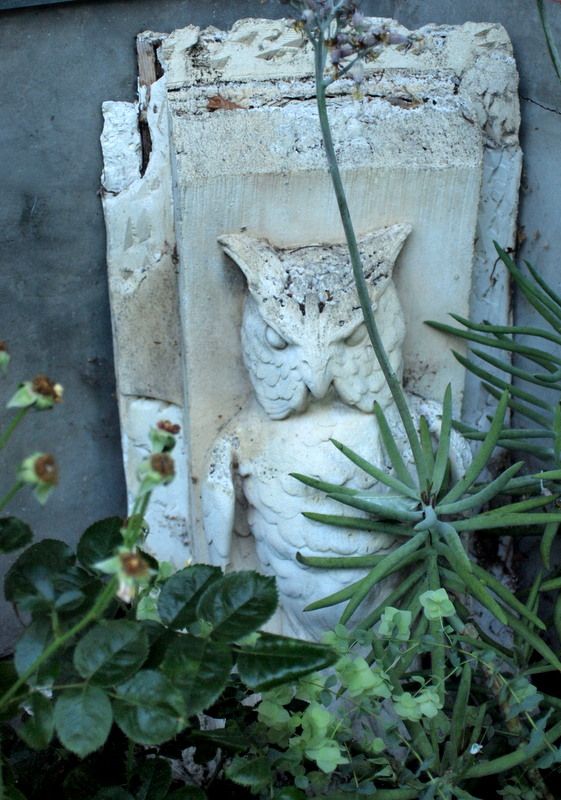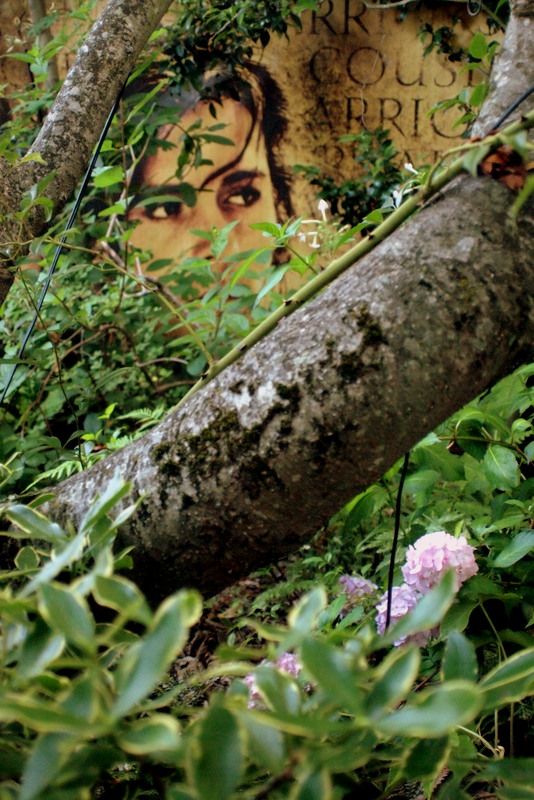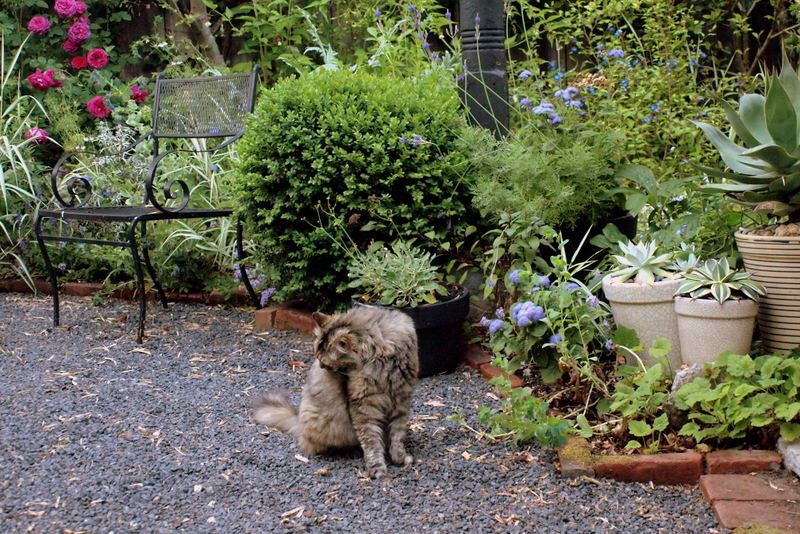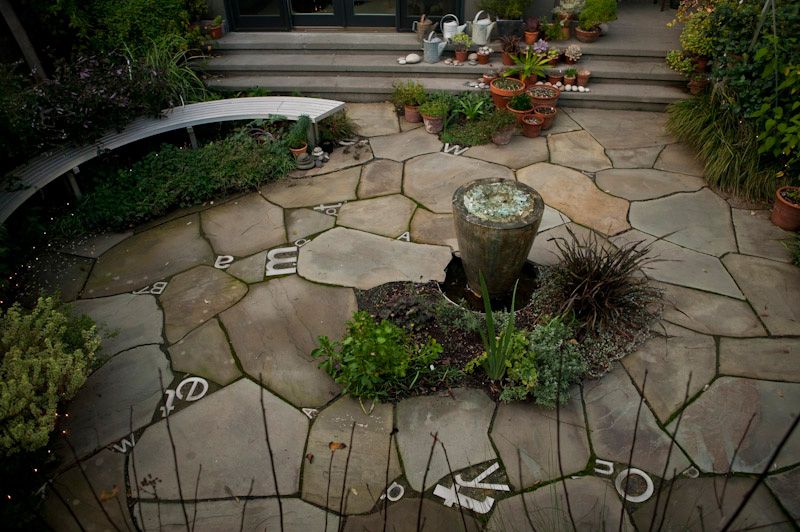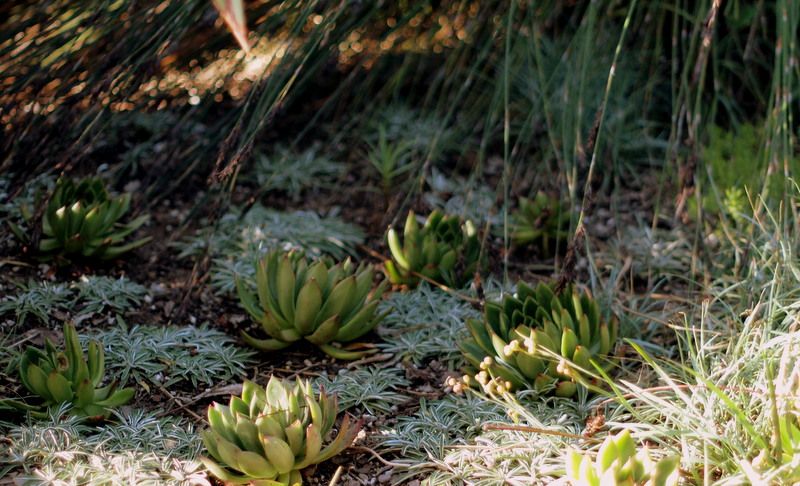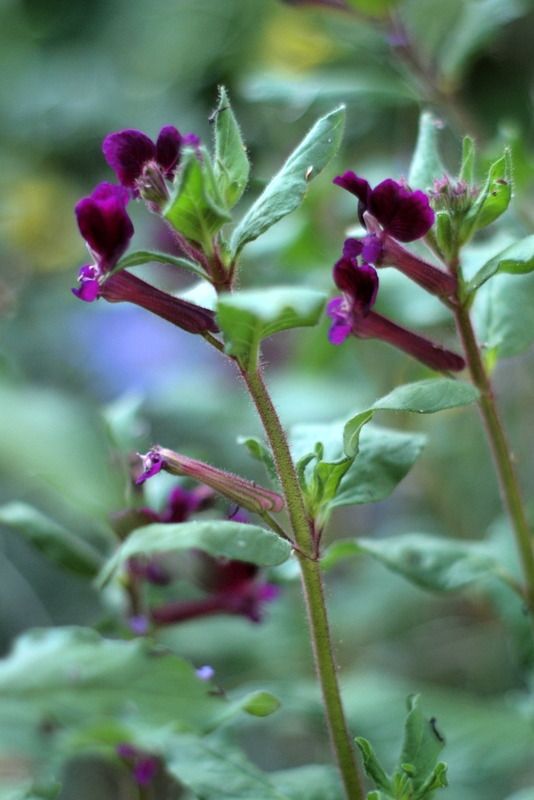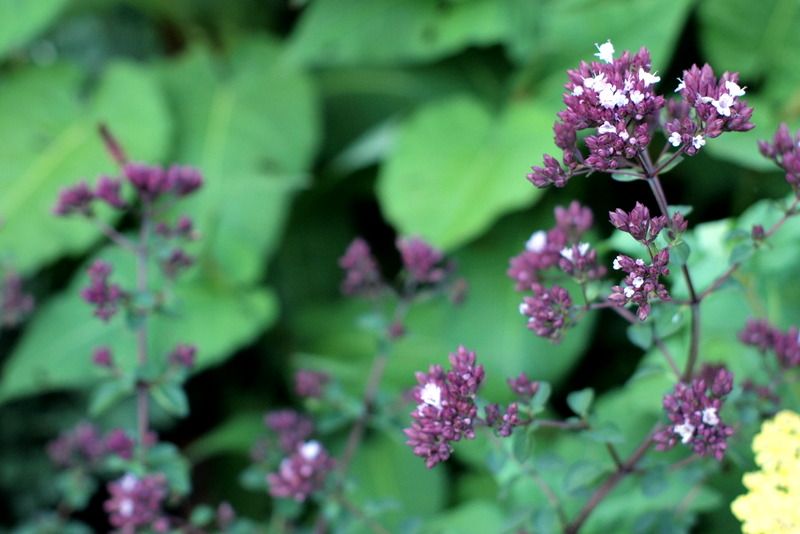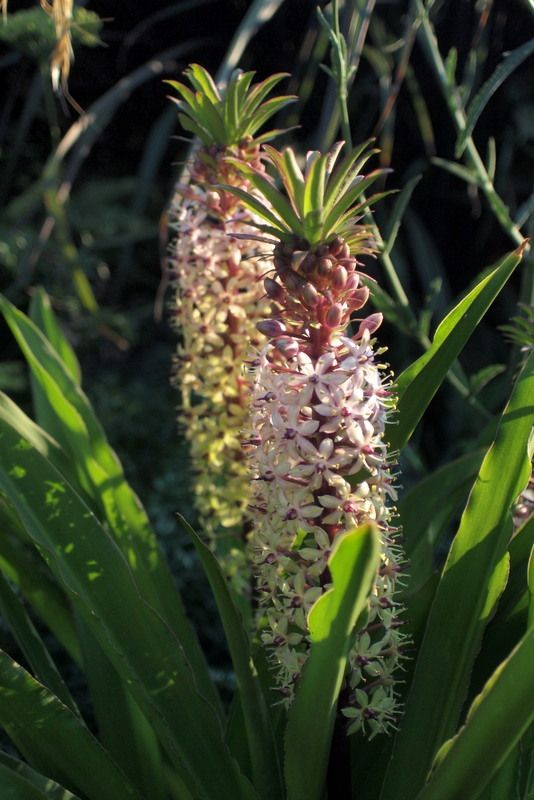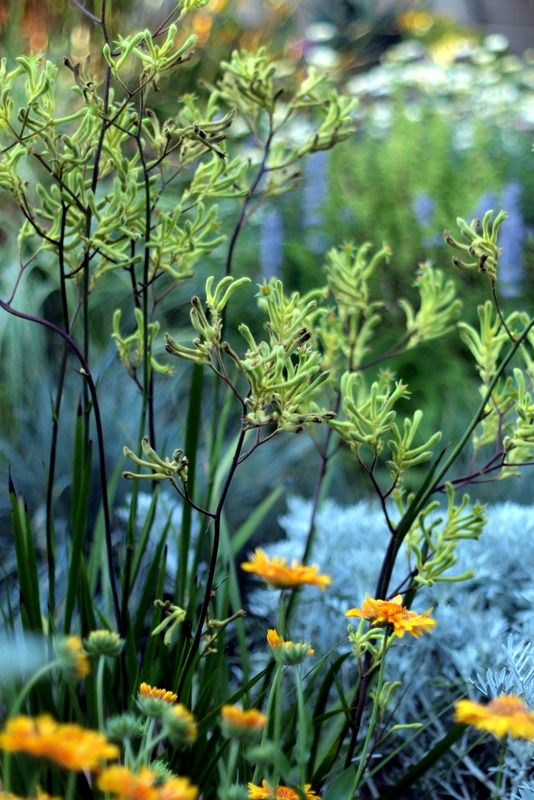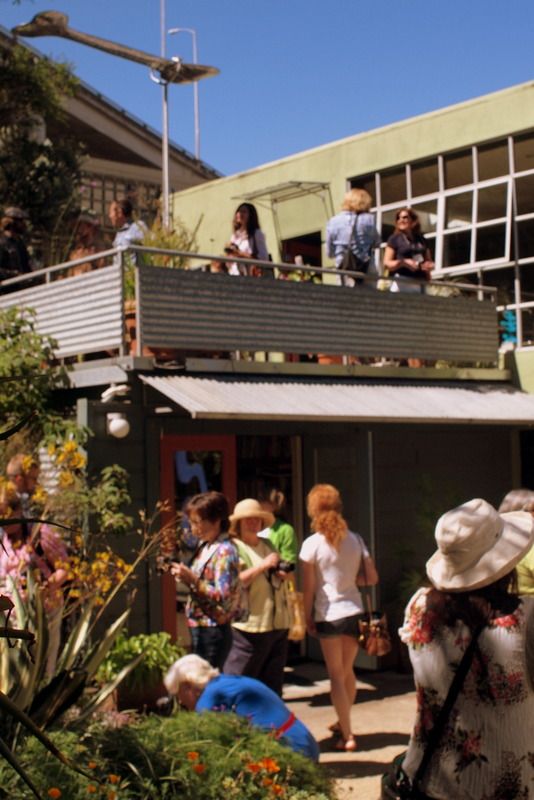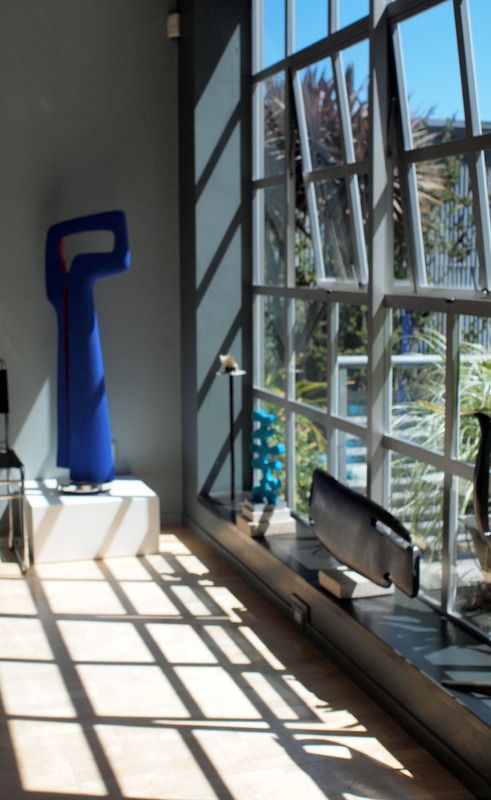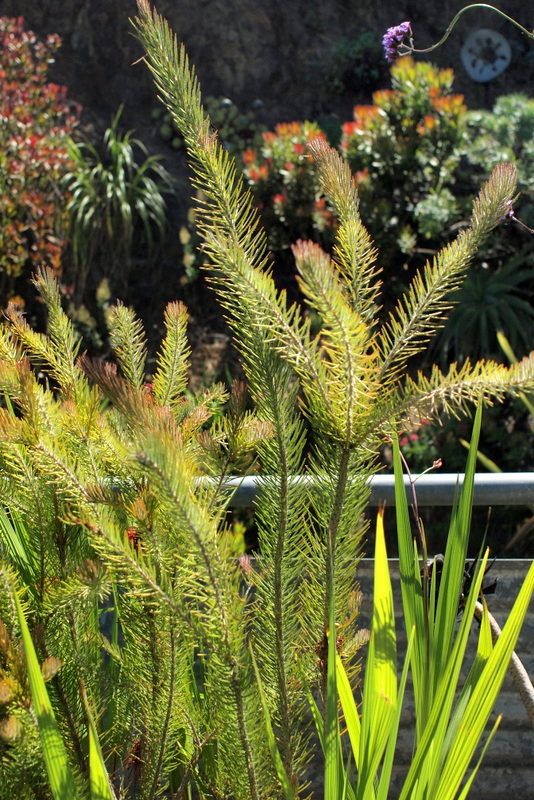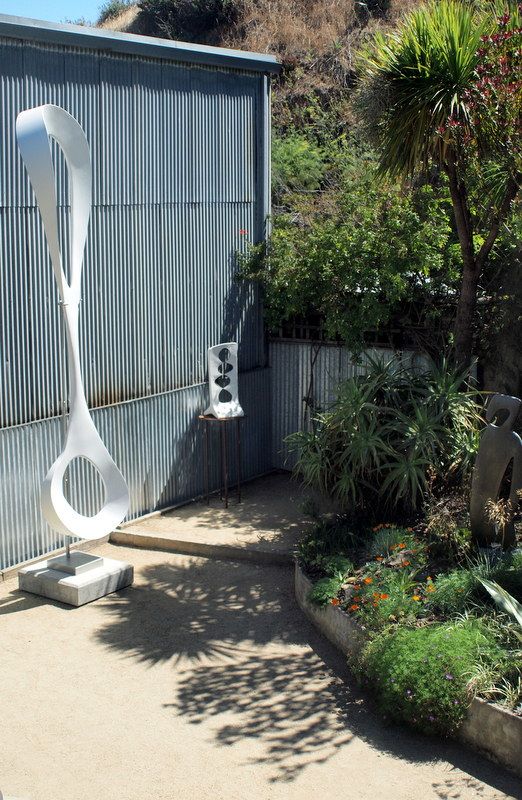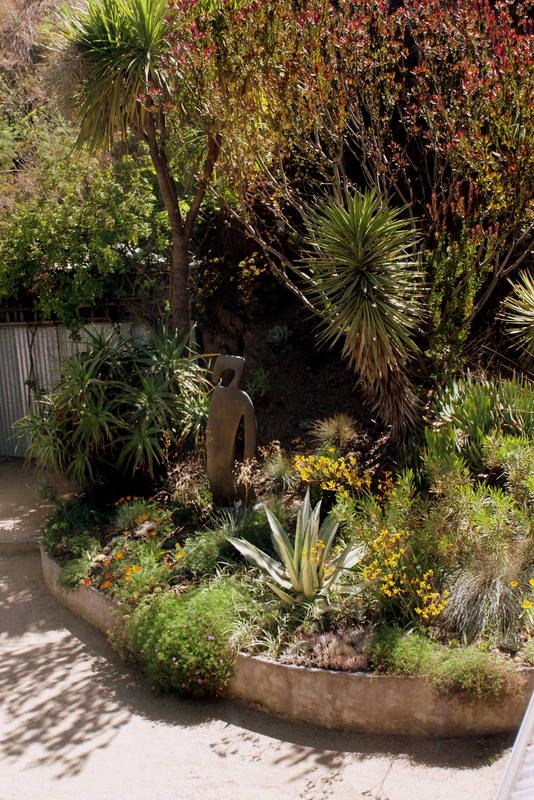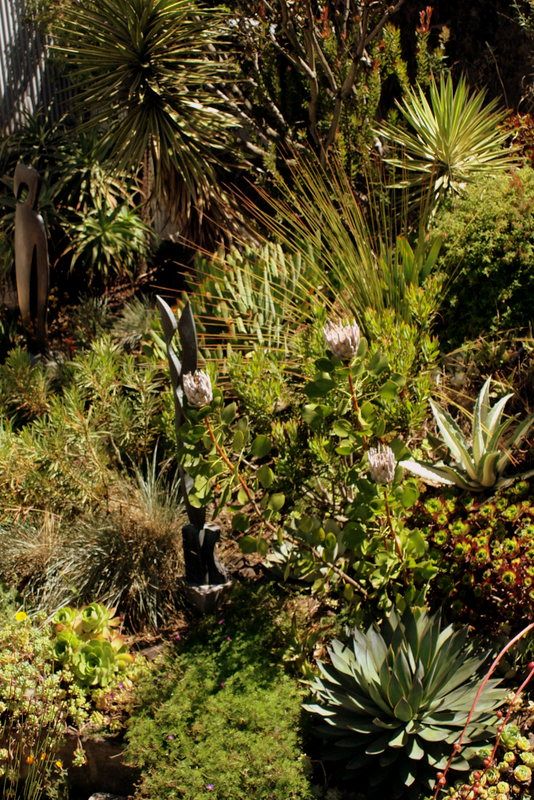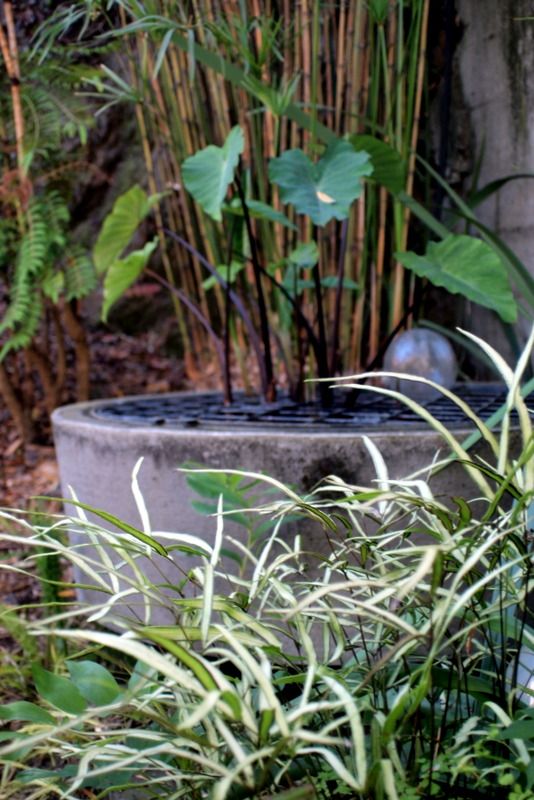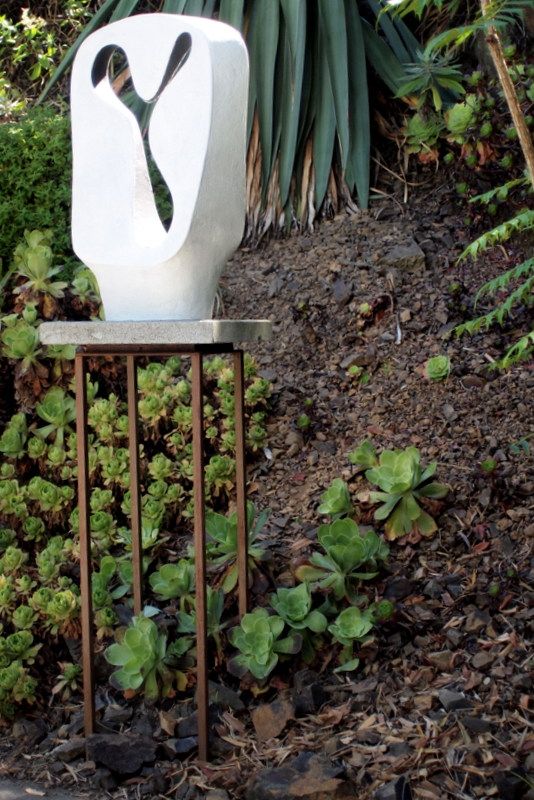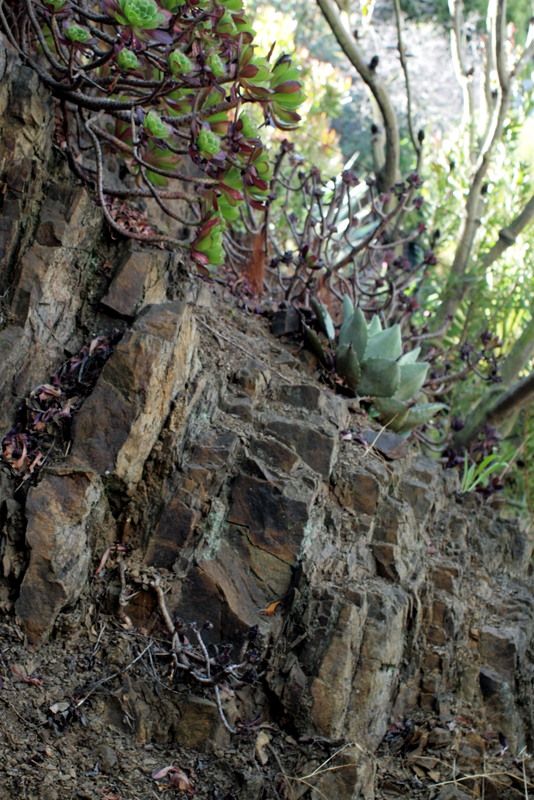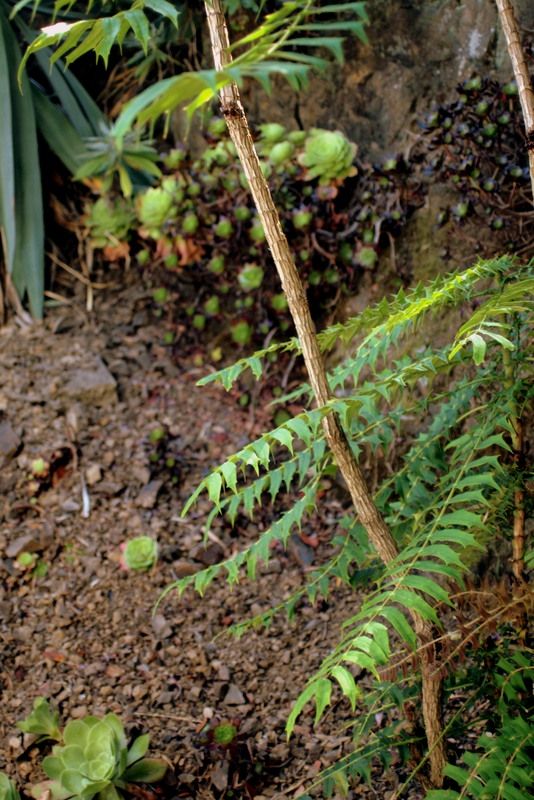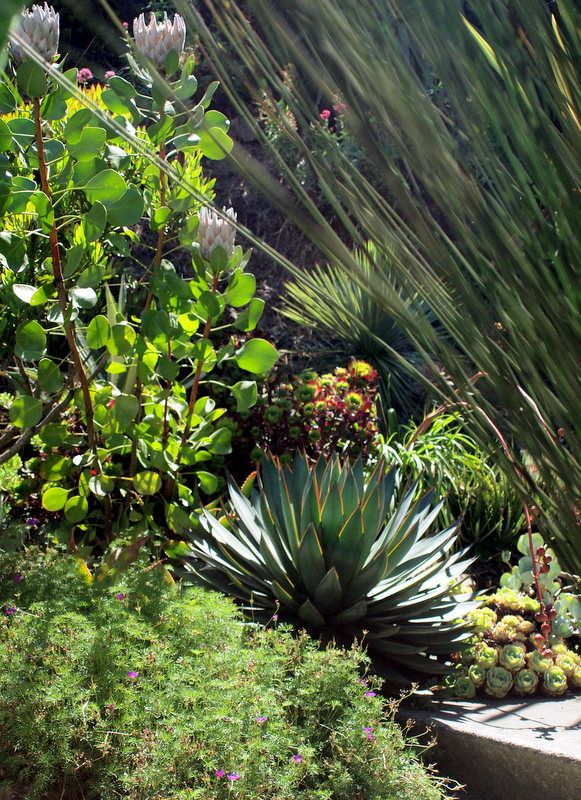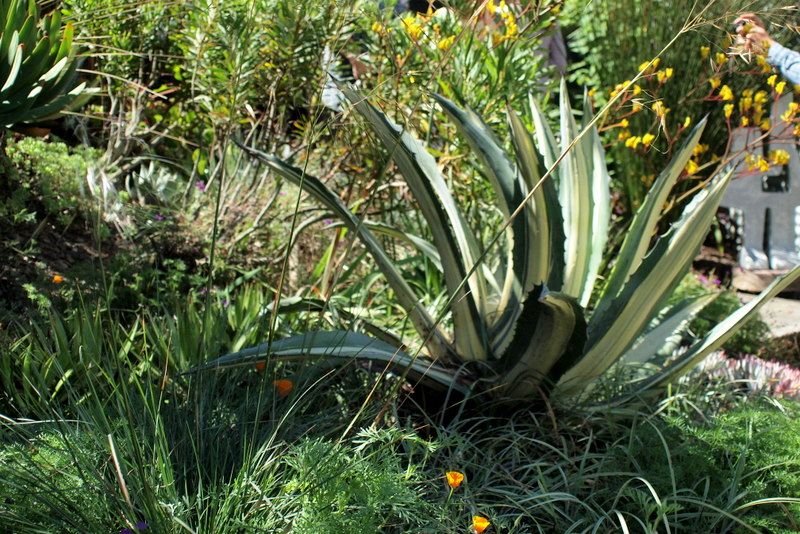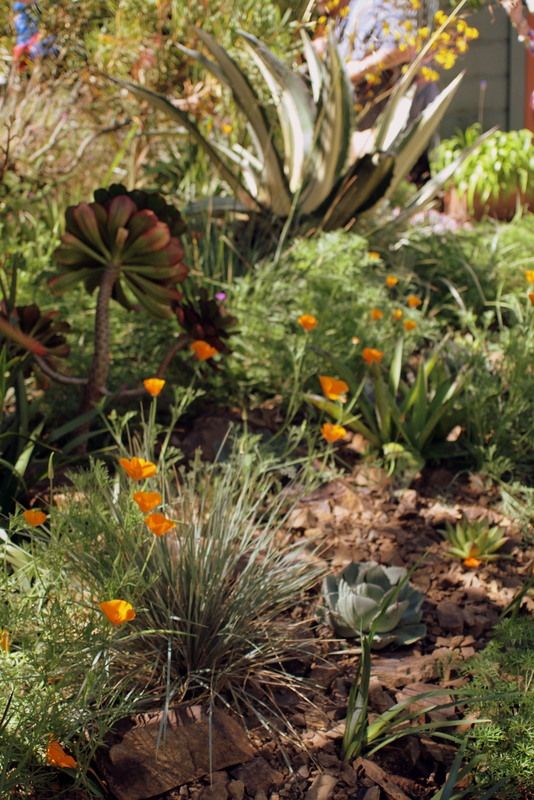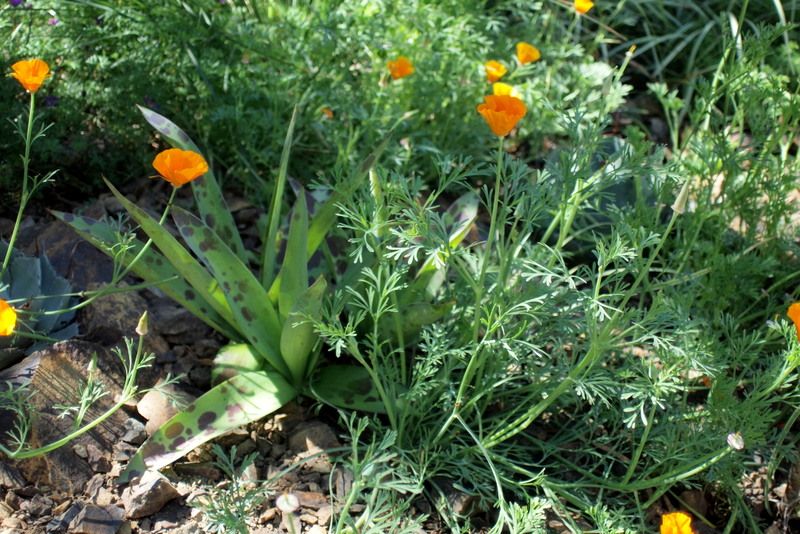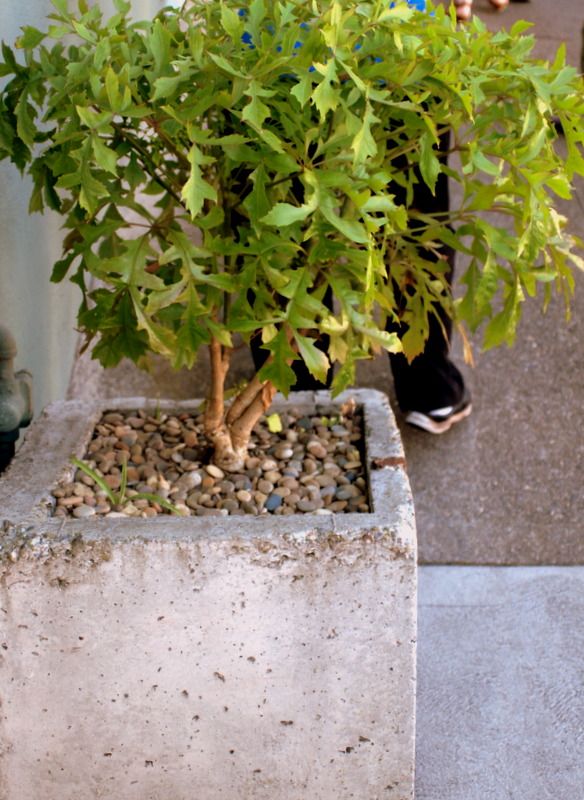Garden designer Dustin Gimbel hosted another of those fabulous mid-summer rave-ups that he calls “Cross-Pollination” at his home and garden, where “hikers, nursery professionals, beekeepers, home brewers, crazy plant people, artists, architects and designers” gather for food and conversation, slipping away occasionally from the outdoor tables for periodic forays into the surrounding garden that nourishes as much as the food and conversation. A trifecta of sensory input. Think a slightly more design-centric Roman bacchanalia and you’ve got the basic idea. (And in case there’s any doubt, I fall into the “crazy plant people” category on the invitation.)

photo by Dustin Gimbel
Maybe another attendee will post photos of the tables groaning under bowl after bowl of fresh, summery food and the friendly group that assembled to partake of the potlucked largesse.* This will be my typically monomaniacal plant reportage. For me one of the stars of the party was the Aristolochia gigantea vine in full, jaw-dropping bloom against the mauve wall of the garage. Various parts of the human anatomy were offered up as visual analogies for these bizarre, fleshily gorgeous flowers. (A non-profane example would be lungs.) The colors here in this corner of the back garden make up a tangily delicious concoction. The golden, feathery shrub is Coleonema pulchellum ‘Sunset Gold.’ On the left is Dodonaea viscosa. Euphorbia cotinifolia is directly behind the central variegated number, which is either a ponytail palm or a cordyline. Or something else entirely. In Dustin’s garden, always expect to be confounded and surprised.
This is Dustin’s photo and description: “Giant dutchman’s pipe (Aristolochia gigantea) is reveling in heat AND humidity. Usually if it gets hot and dry these comically large blooms get seared by the heat and often don’t even open, burnt crisp by the sun.”
A horticultural event of immense drama — but then that pretty much describes Dustin’s garden any time you visit.

Euphorbia ‘Blackbird’ and Gomphrena ‘Fireworks’

Gomphrena ‘Fireworks’ with Dustin’s hand-made totem towers
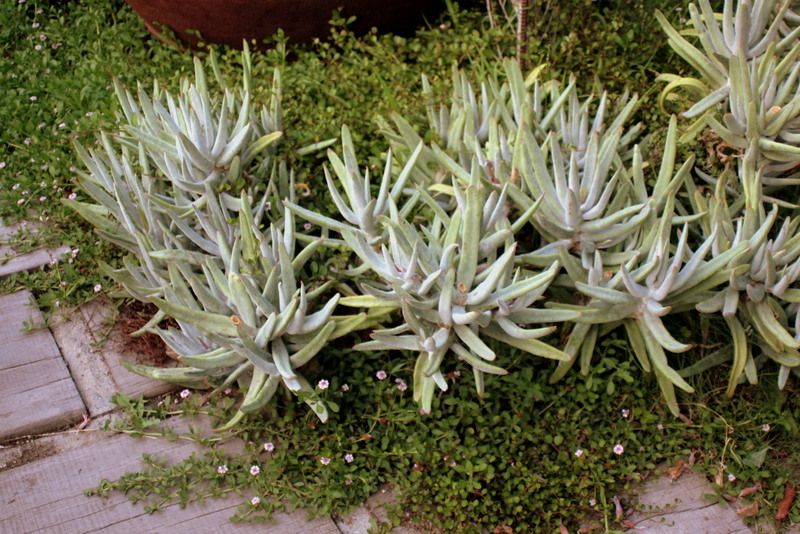
Cotyledon orbiculata var. flanaganii with mattress vine
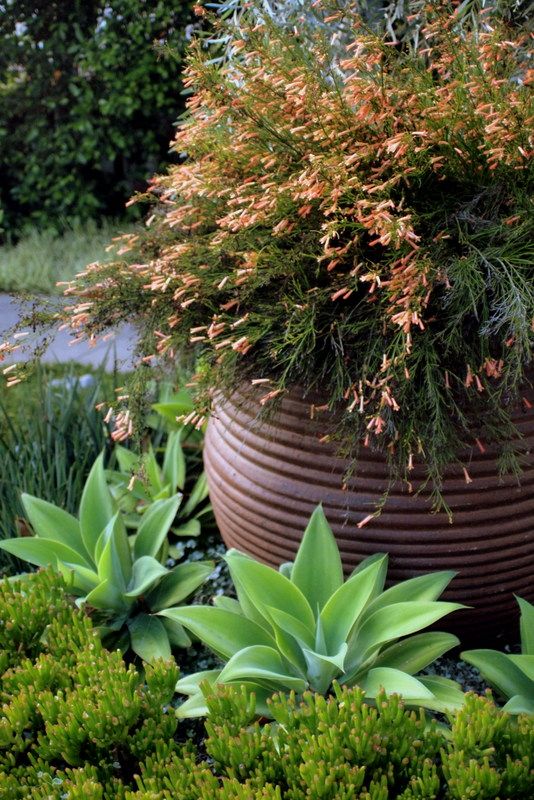
Peachy Russellia equisetiformis and a golden Agave attenuata, possibly ‘Raea’s Gold,’ ‘Kara’s Choice’ with I think Sedum rubrotinctum.
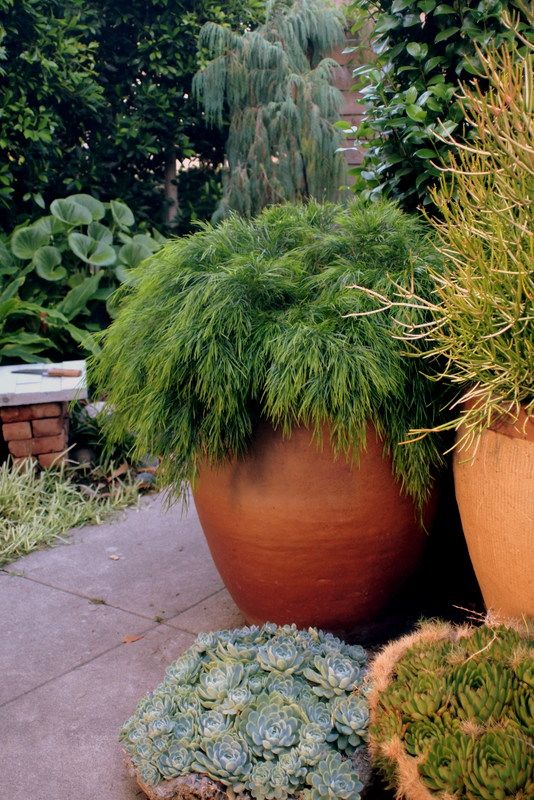
Dustin was way too busy hosting the soiree to be coralled into extended plant ID sessions like I normally do. So I’m hazarding that the shaggy beast in the far left container is Acacia cognata ‘Cousin Itt,’ with firesticks, Euphorbia tirucalli, and bowls of echeveria. A visit to Dustin’s garden always reminds one to go large. No itty-bitty gestures, please.
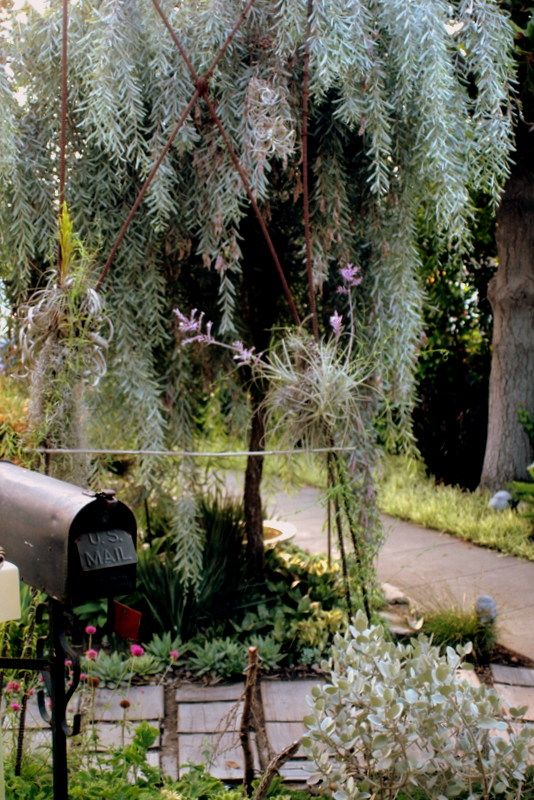
The Acacia pendula arbor over the main diagonal path in the front garden, seen from the front porch, to which the path runs roughly parallel. The golden, glowing strip in the background lining another path to the back gate is variegated St. Augustine grass. Dustin recently pulled out assorted plants here to go for a bigger impact with this grass. A wise man, that Dustin.
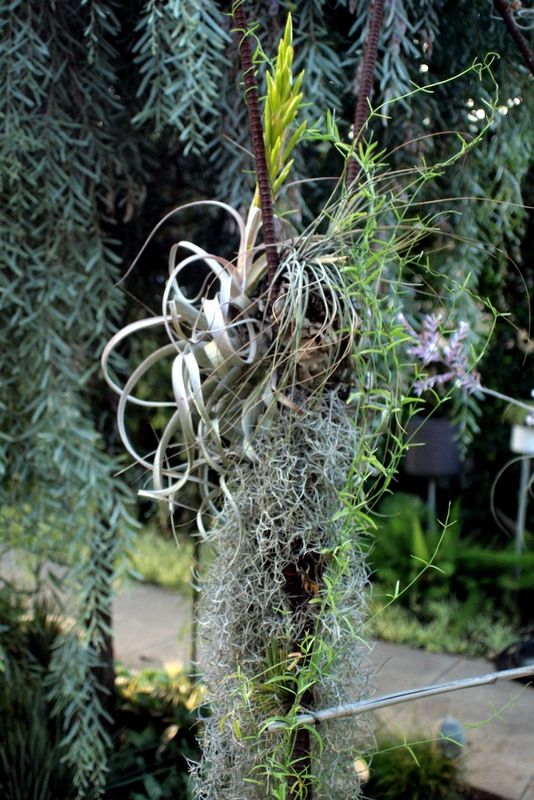
Silvery ribbons of tillandsias and Spanish moss have been tied to delicately drape from the rebar arch.
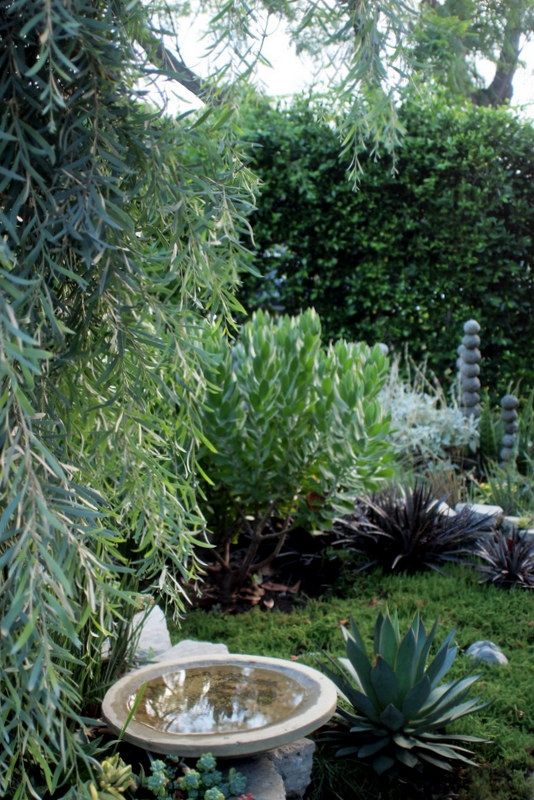
The Acacia pendula, an Agave ‘Blue Glow’ surrounded by Frankenia thymifolia, a walkable ground cover Dustin uses to such good effect in creating quiet pools of visual rest. Possibly Leucadendron argenteum leucospermum and burgundy dyckias in the background. The privet hedges enclosing the front garden are maturing and filling in, screening the garden from the busy street.
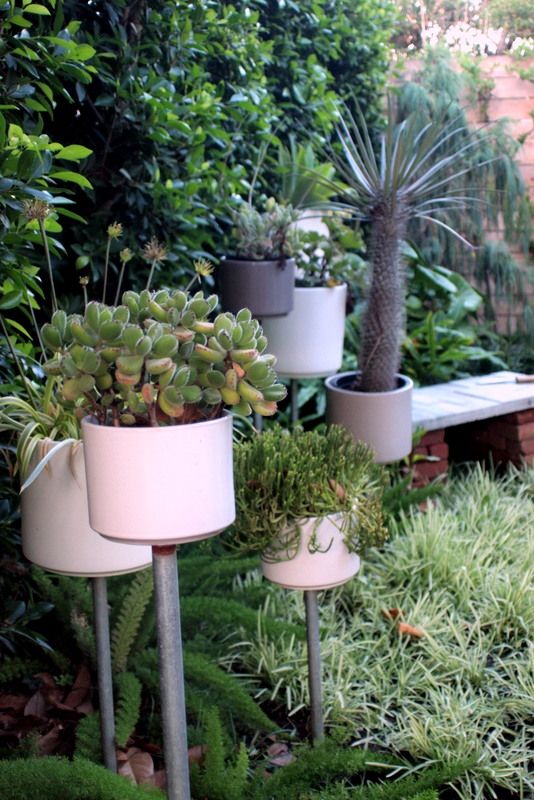
I have to admit I wasn’t too excited about the Gainey ceramic pots on pipes when I first saw them, but with the simplified planting underneath of Myer’s asparagus fern and variegated St. Augustine grass, I’ve become an enthusiastic convert.

The Crested Ligularia, Farfugium japonicum ‘Crispatum,’ and an equally crested ivy, pairing the frilly with the frillier.
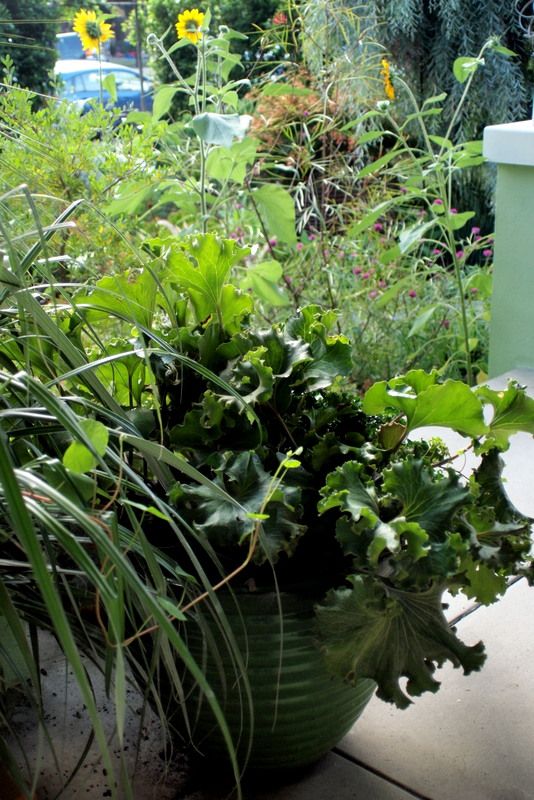
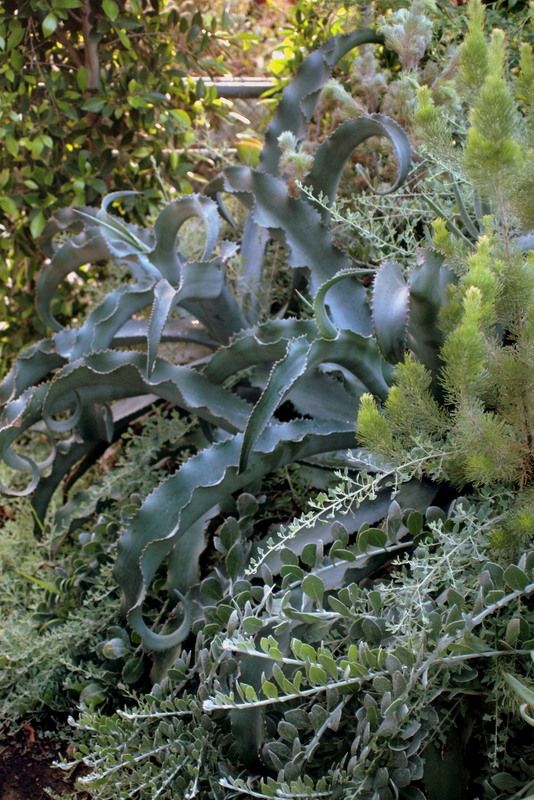
Agave gypsophila and the Woolly Bush, Adenanthos sericeus. The silver trailer might be Lessingia filanginifolia is Chrysanthemoides incana.
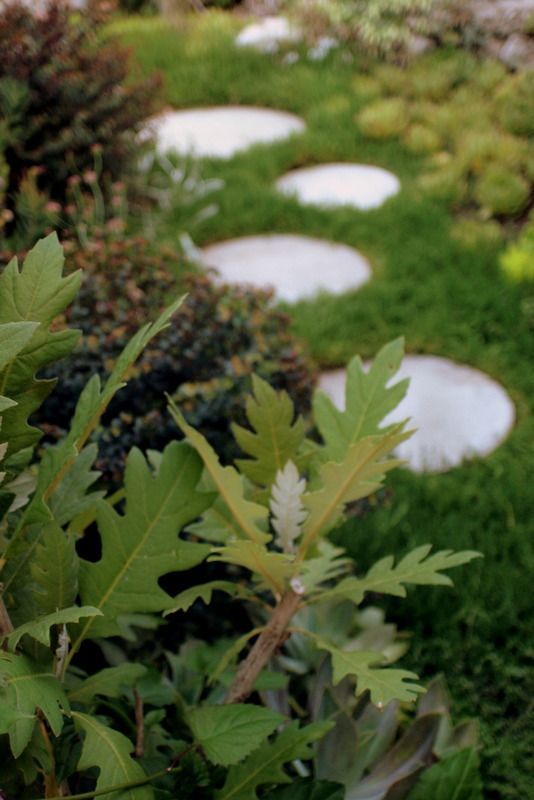
Bocconia and Frankenia thymifolia engulfing circular stepping stones
Thanks to Dustin, after such a magical evening one can’t help but leave feeling…well, pollinated and fertile with new-found energy and ideas. And just a little hung over the next morning.
*And Annette’s marvelous post can be read on Potted’s blog.


